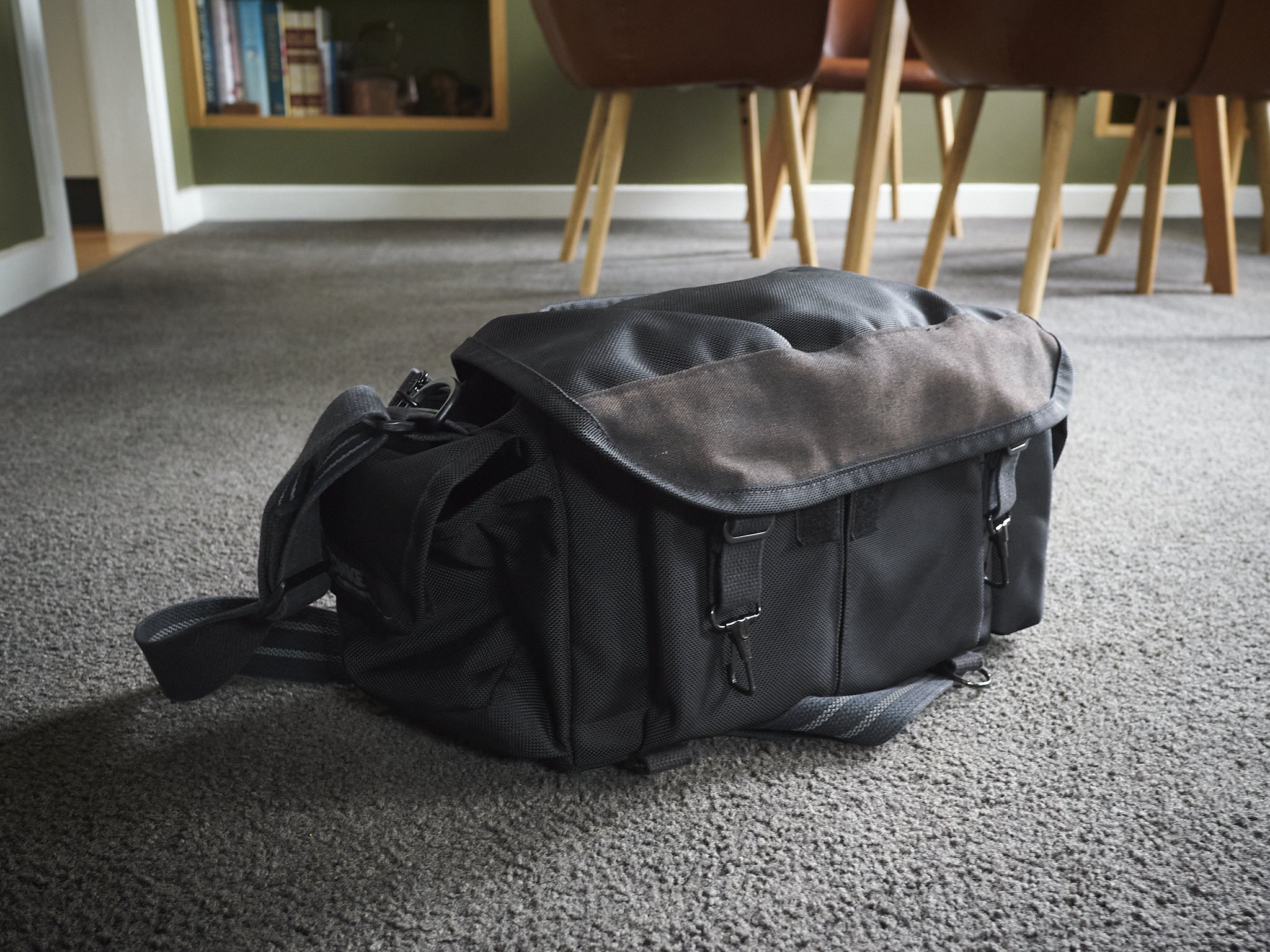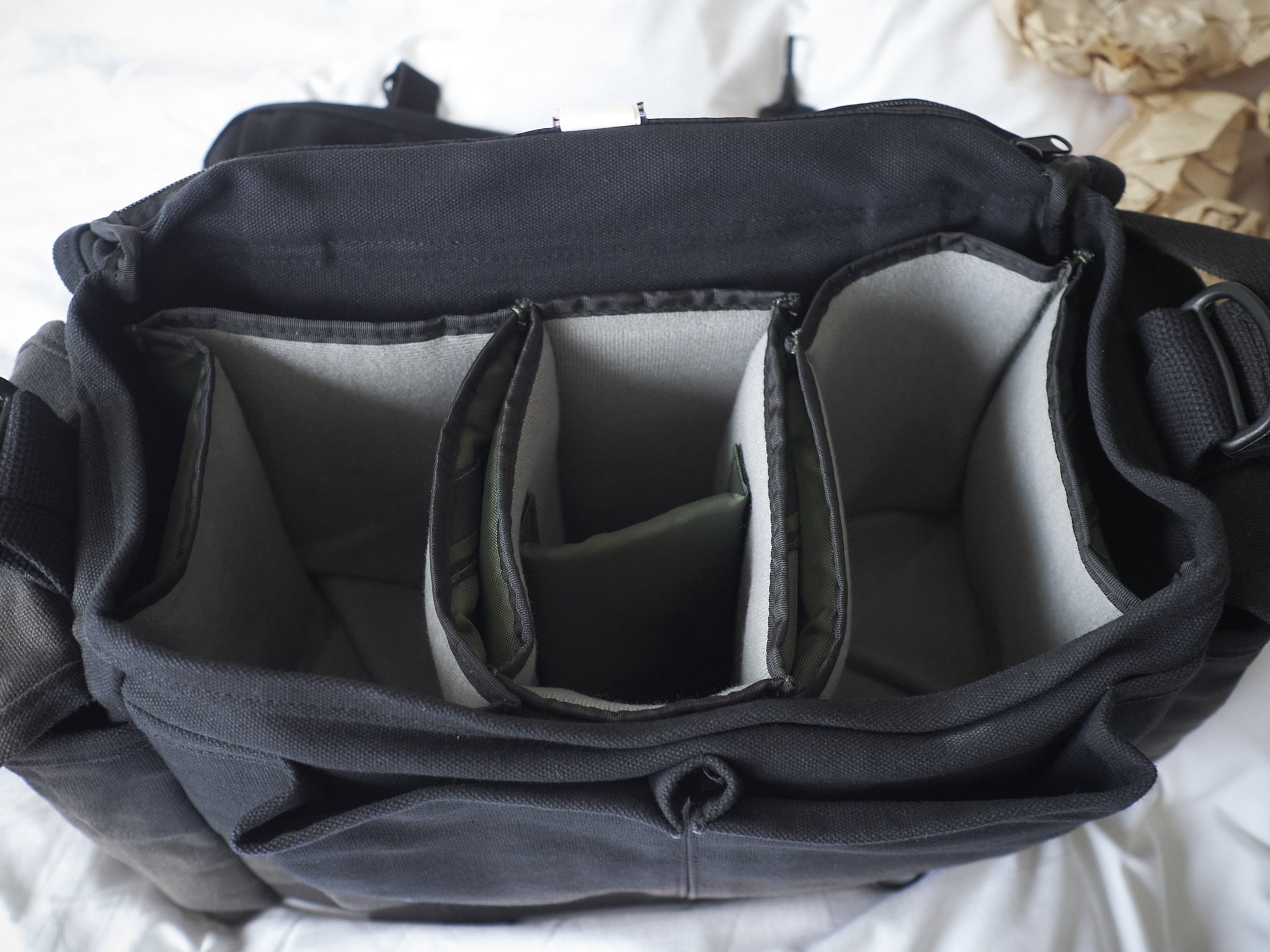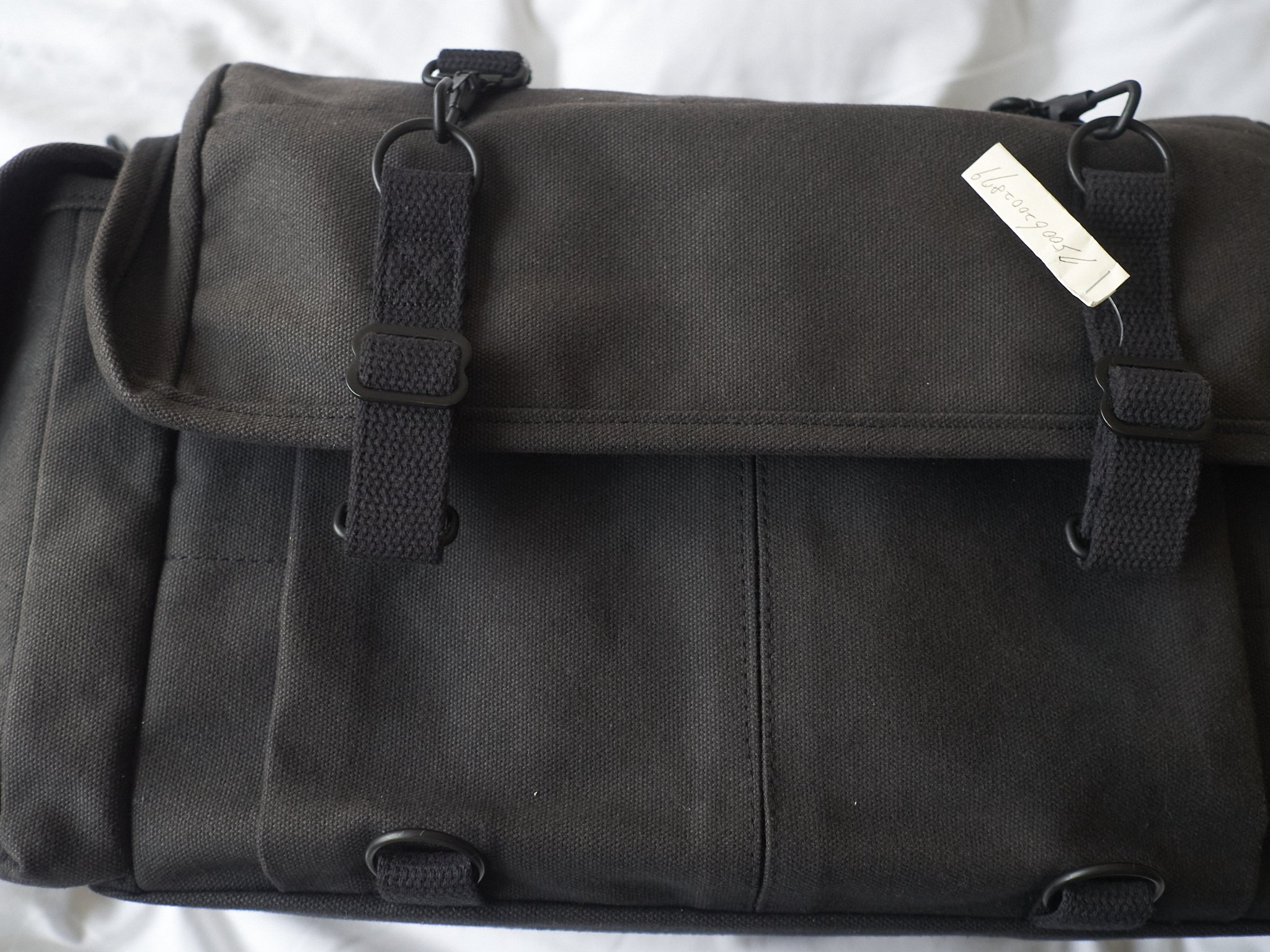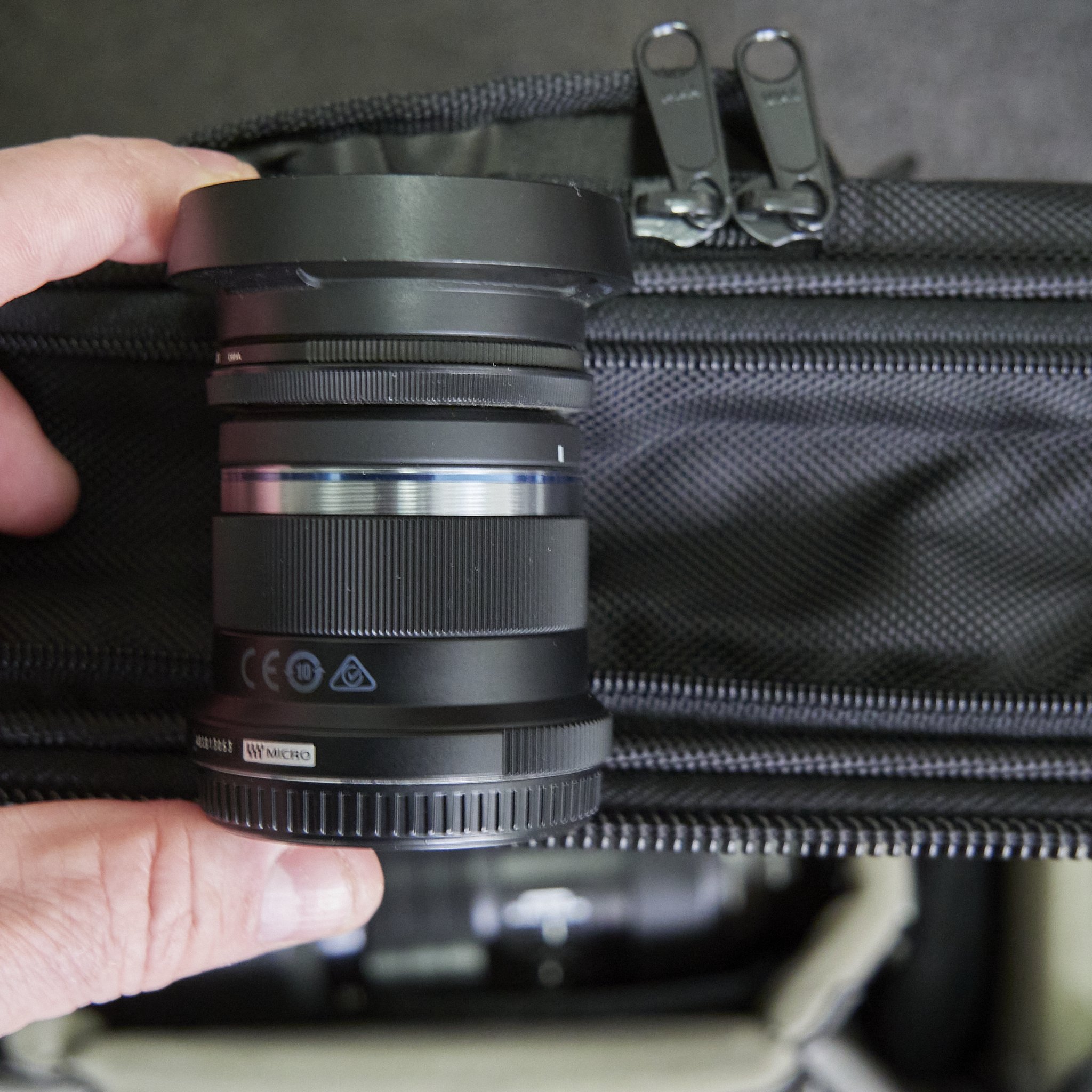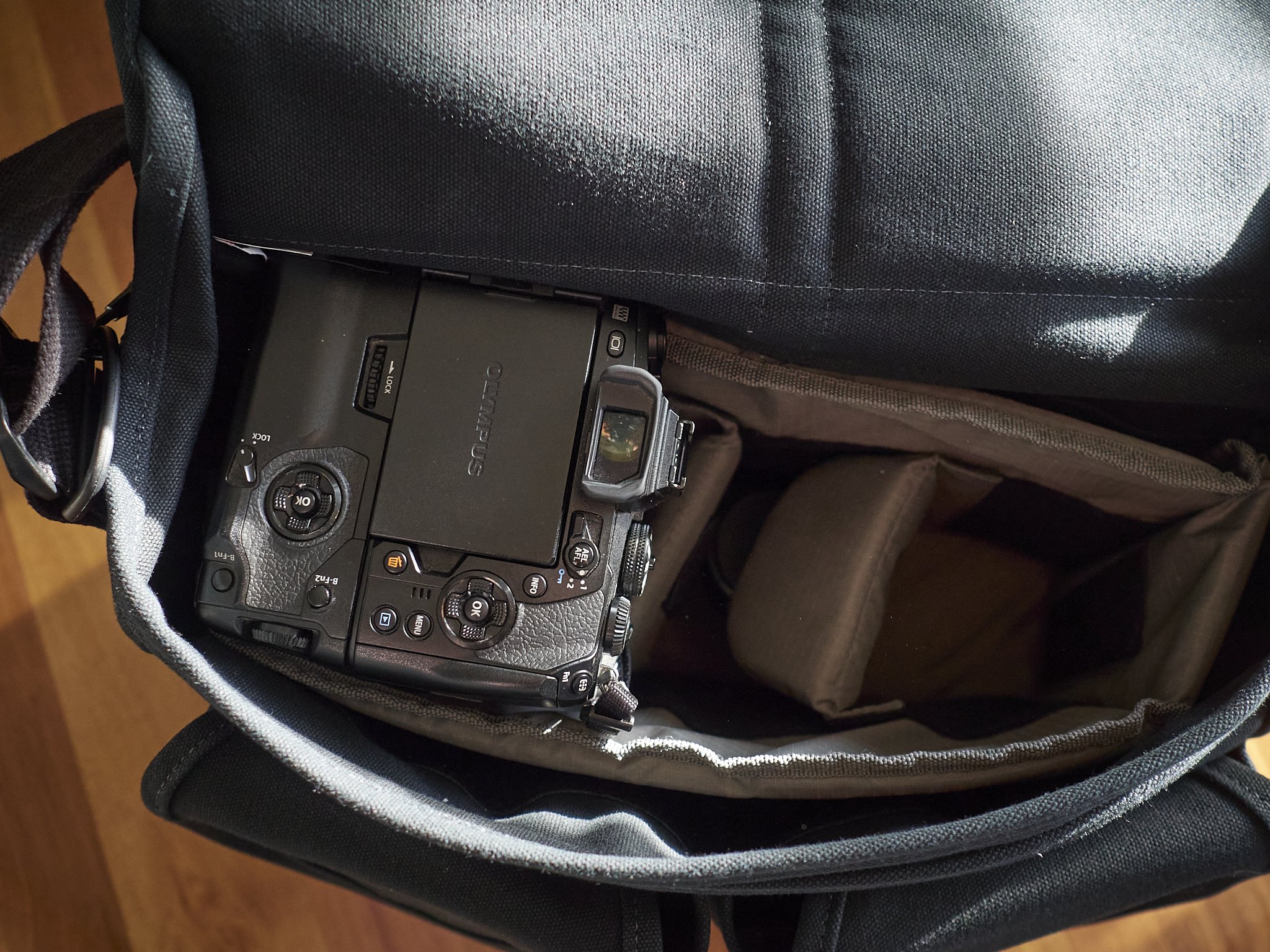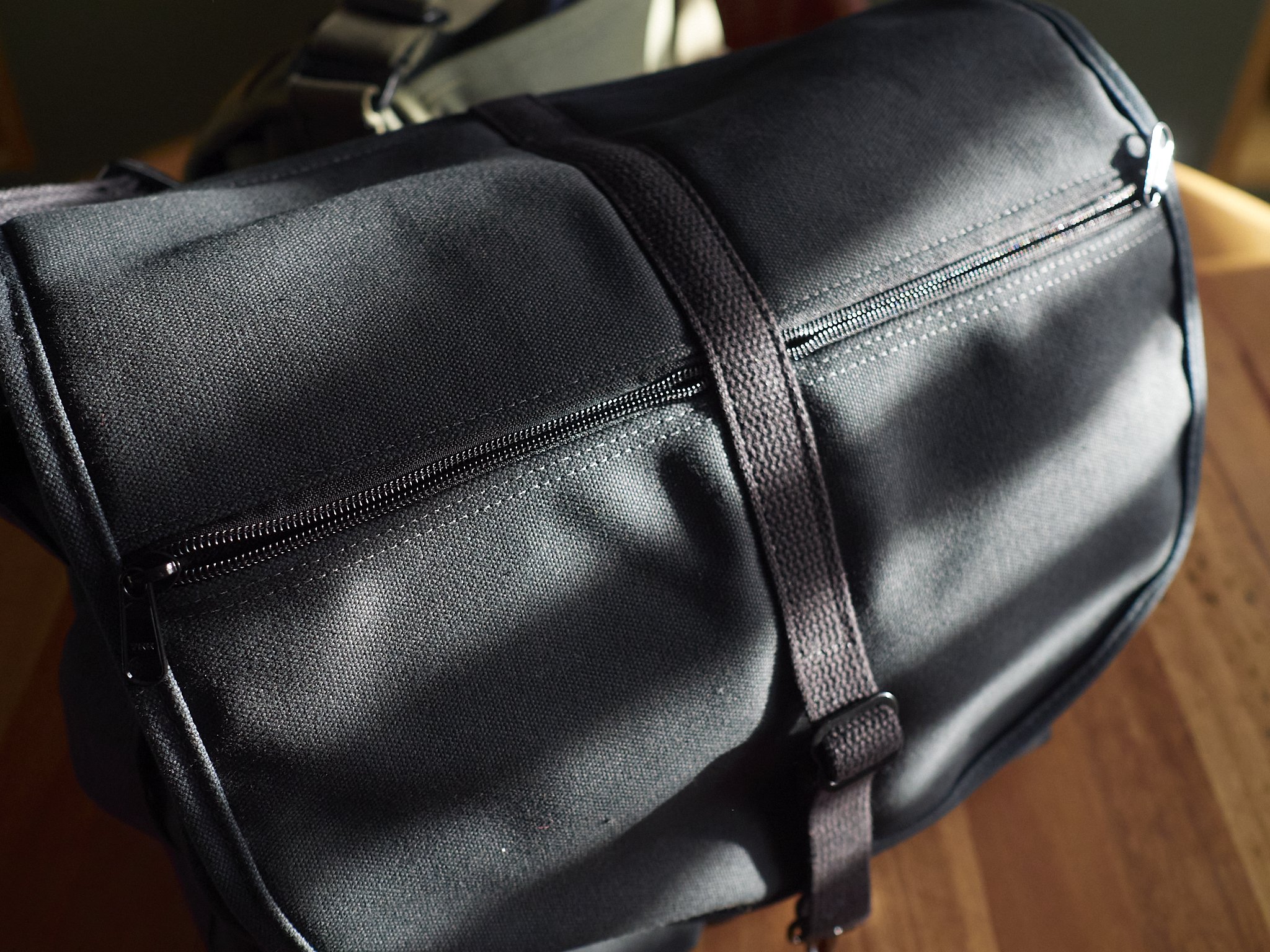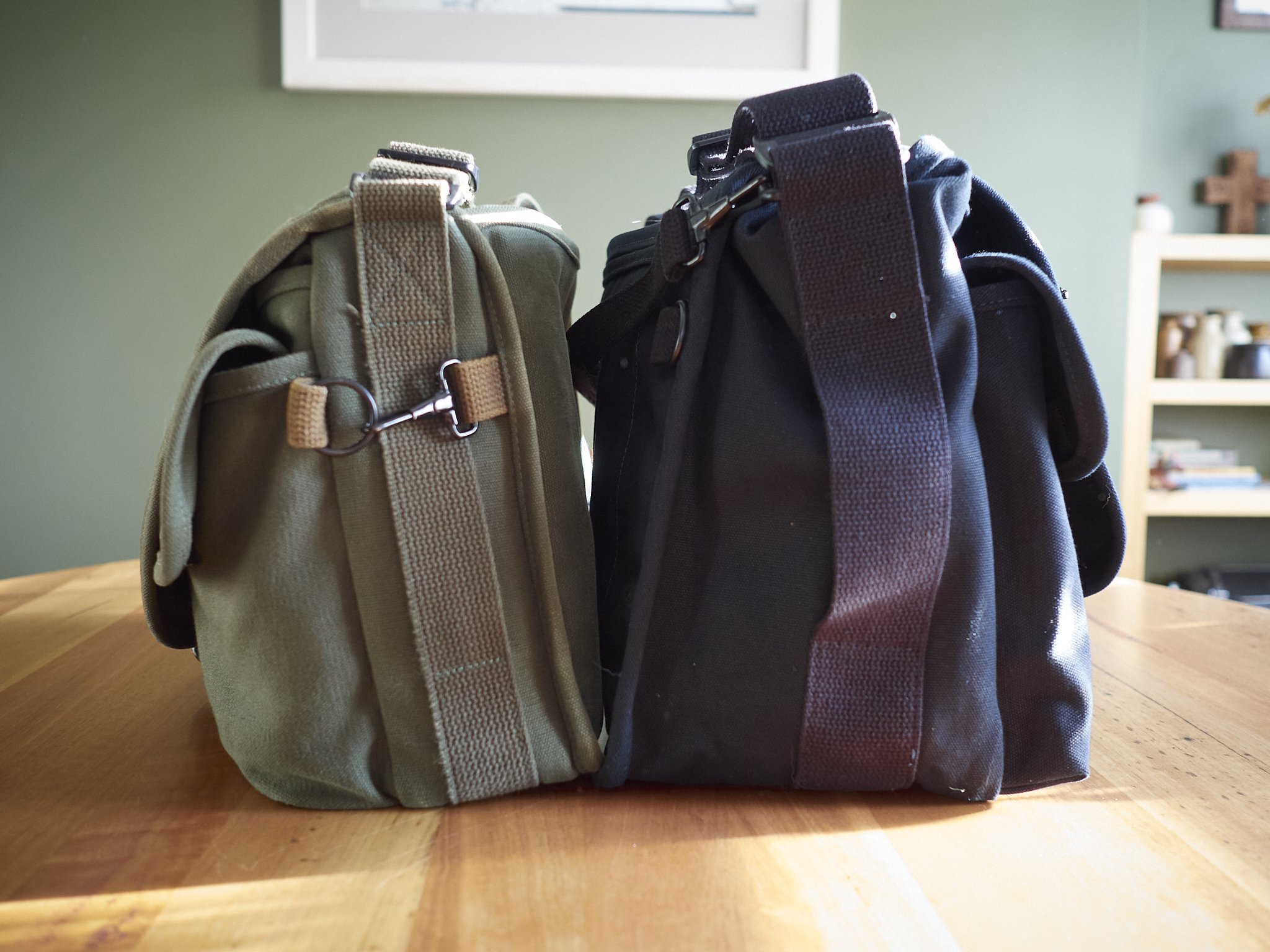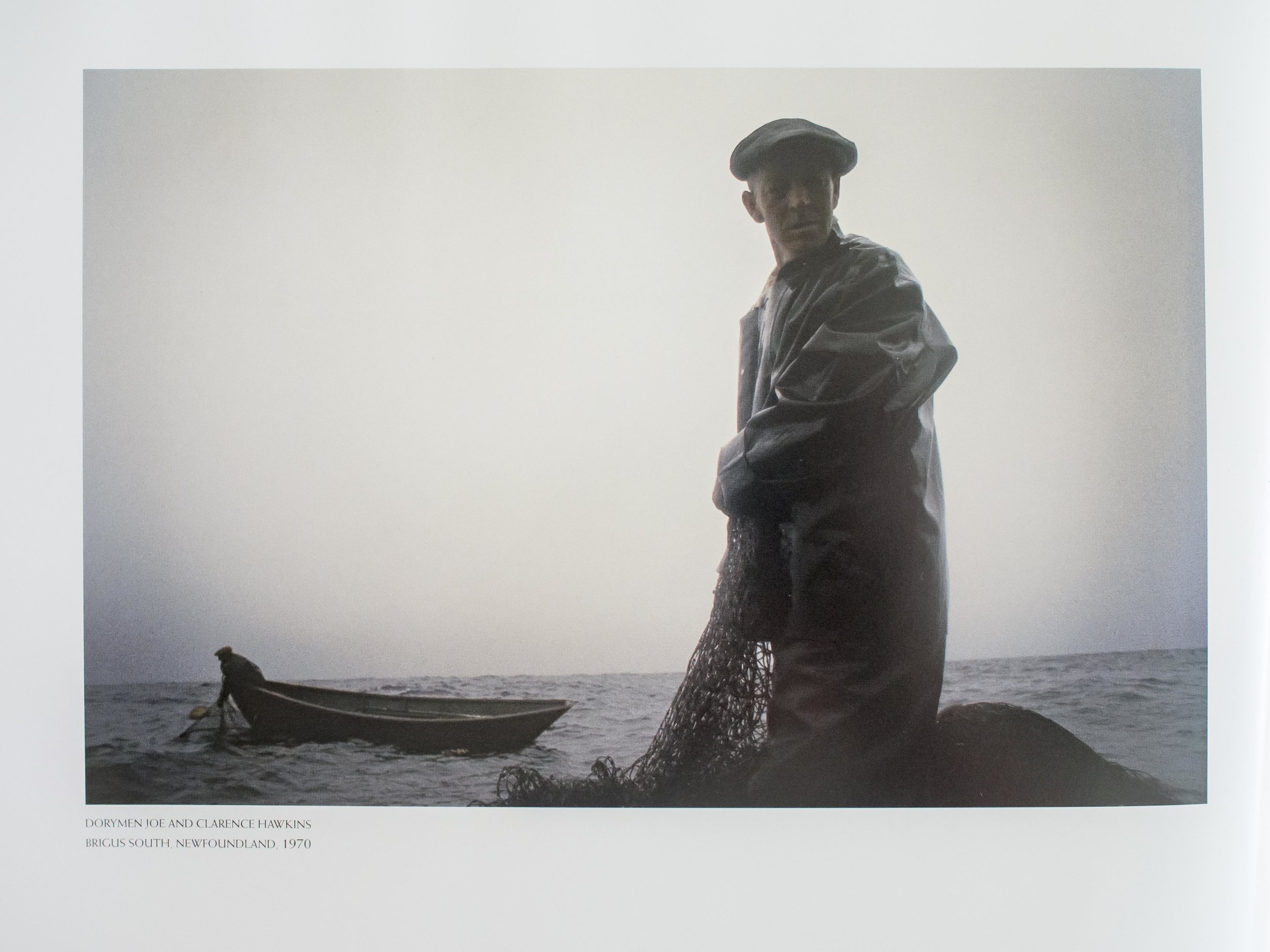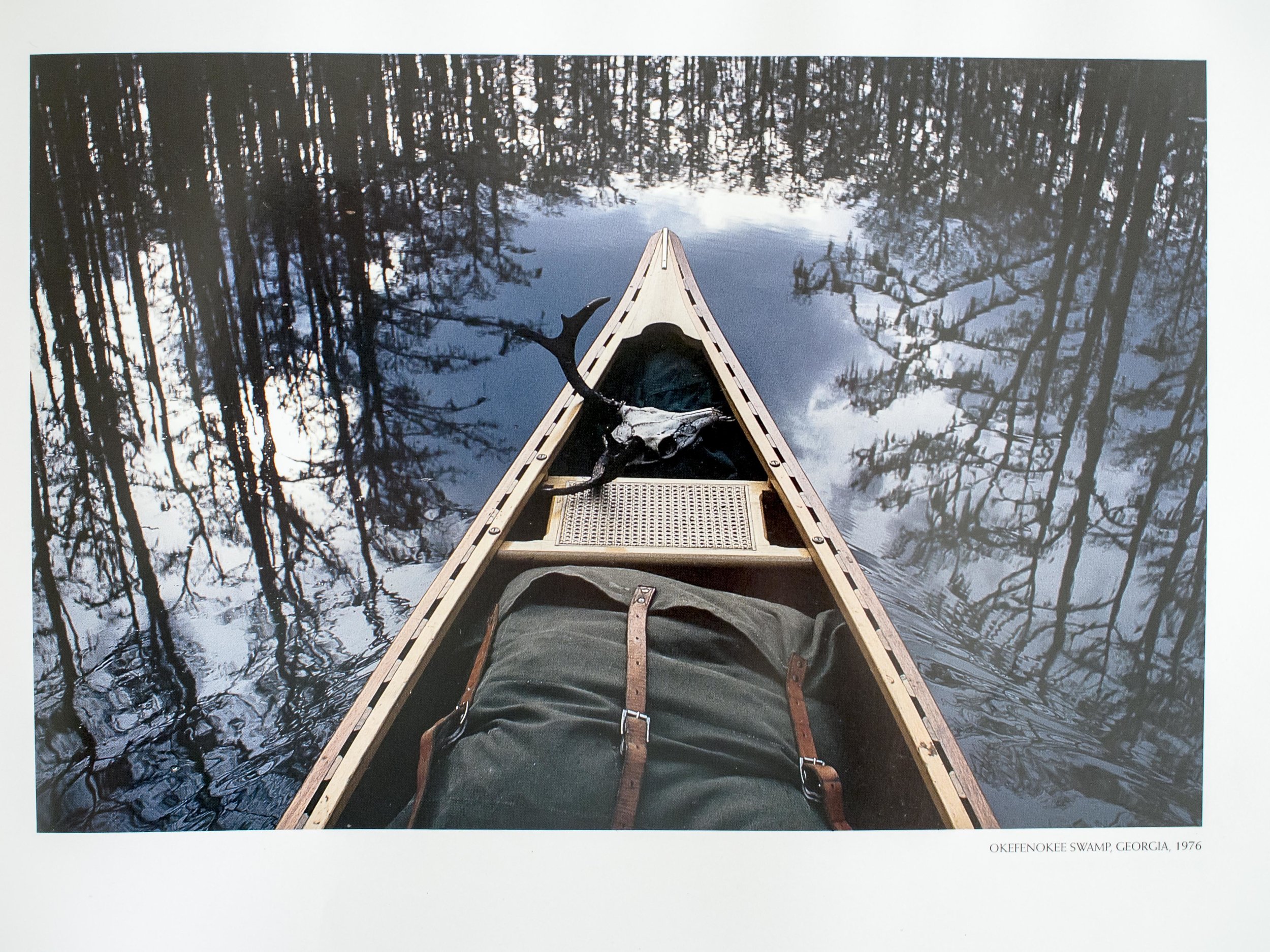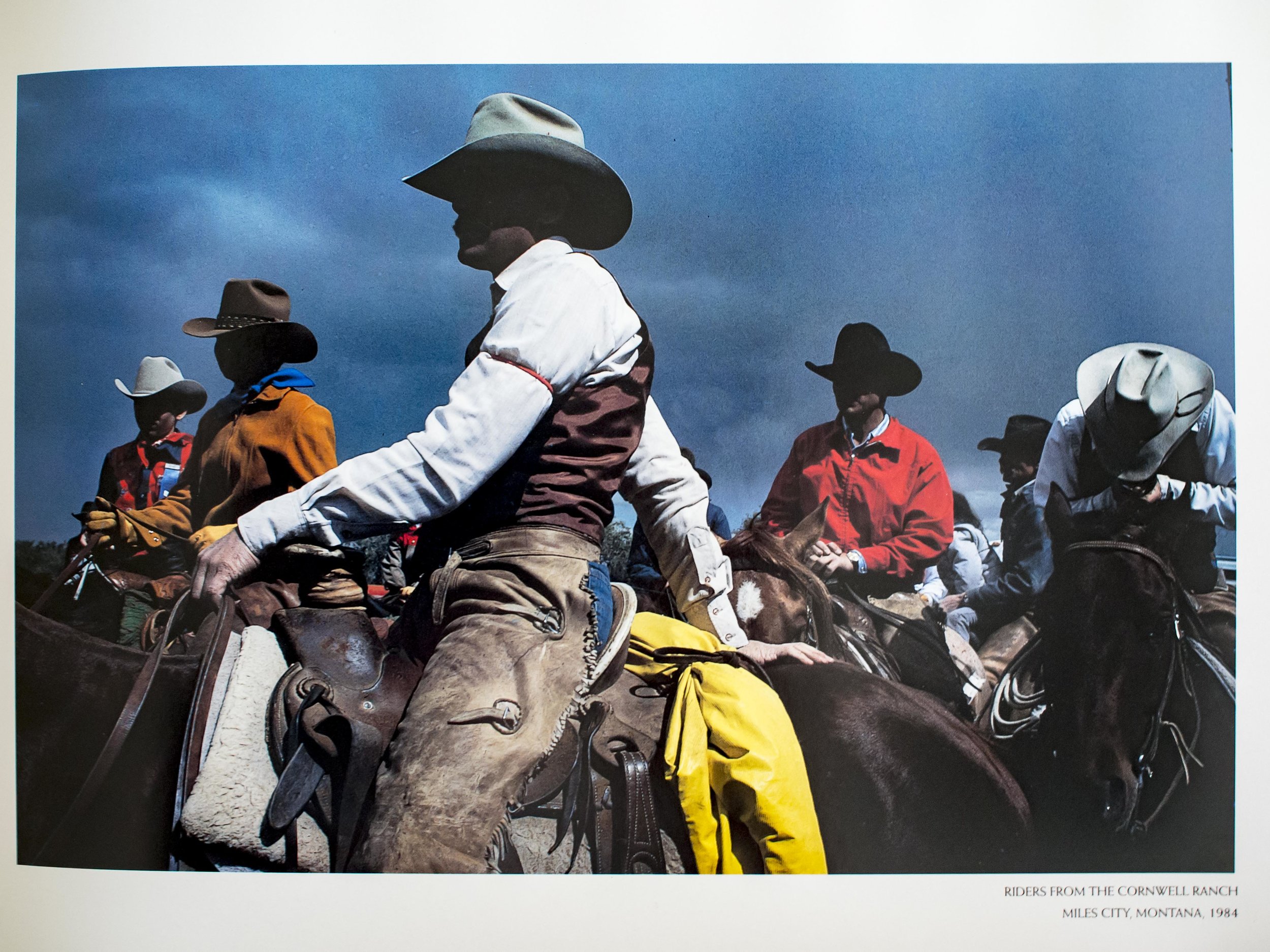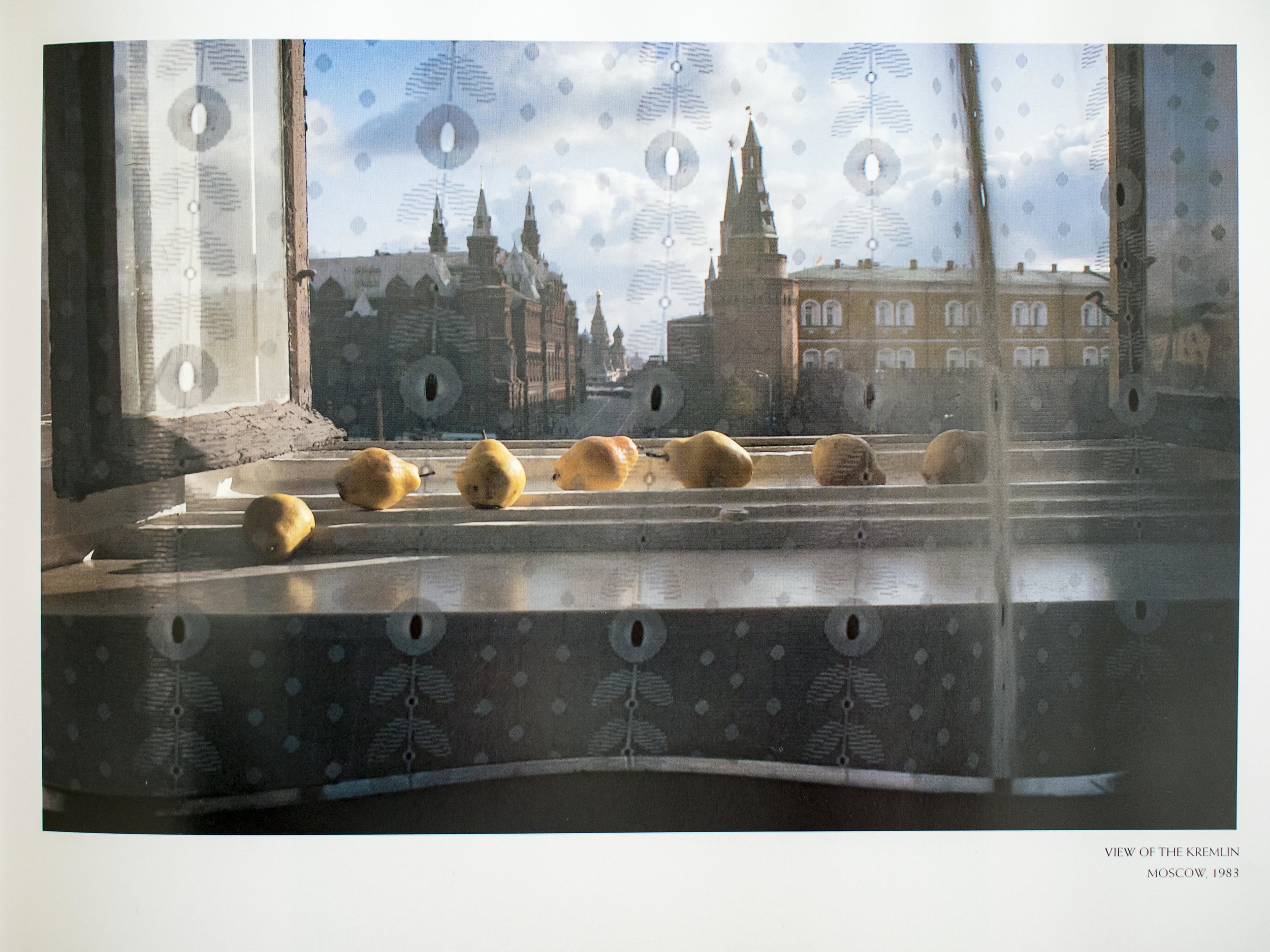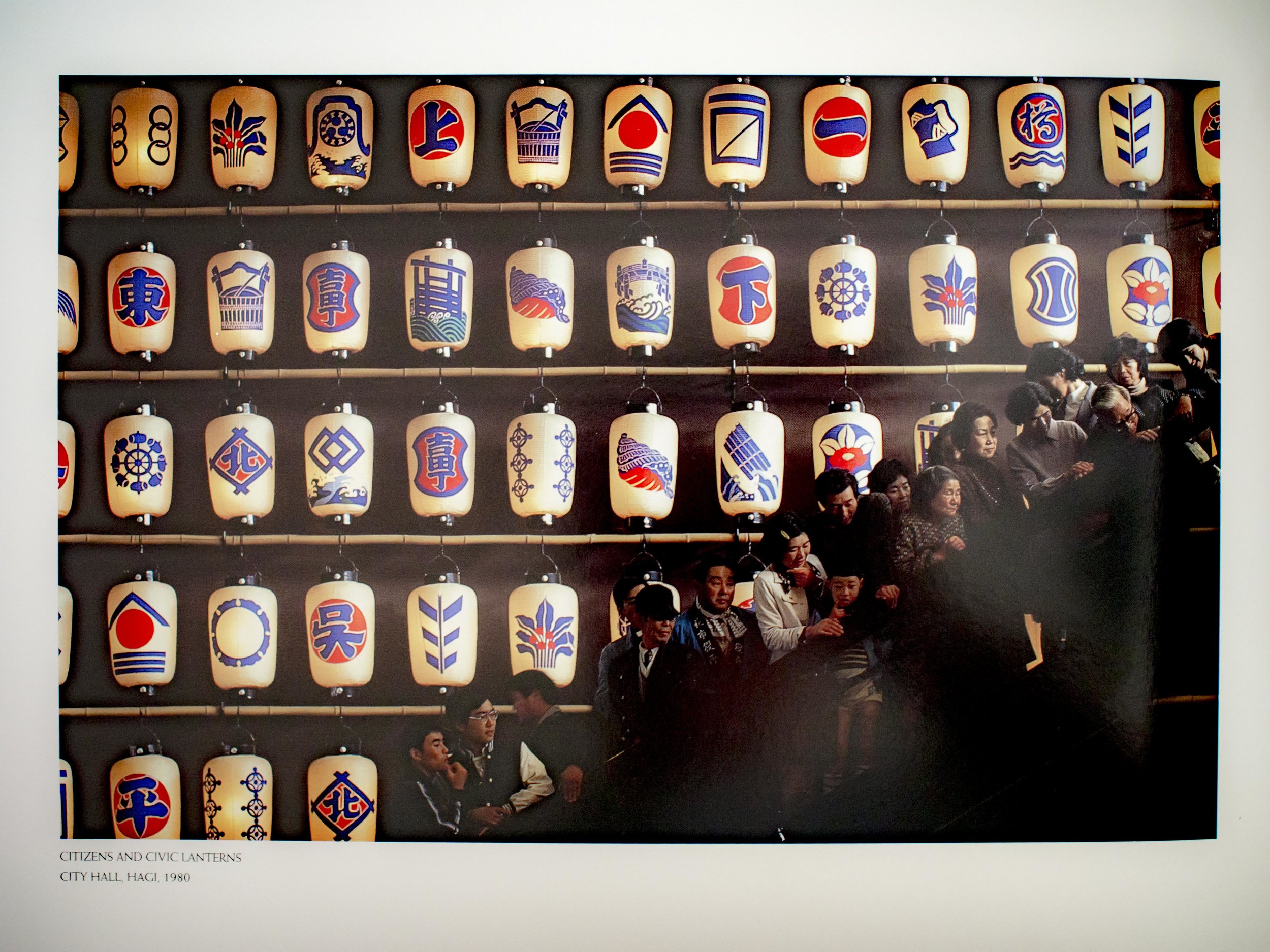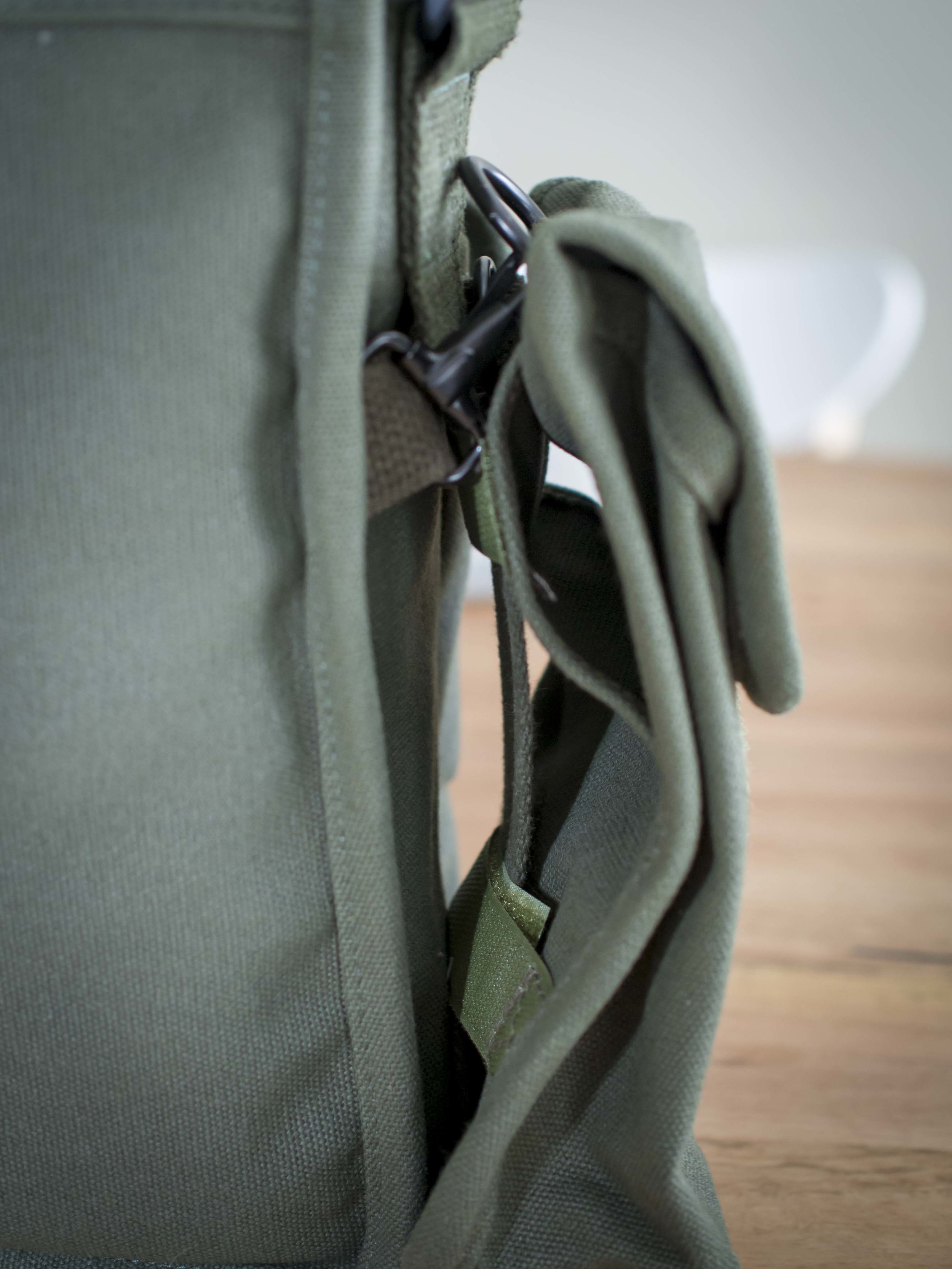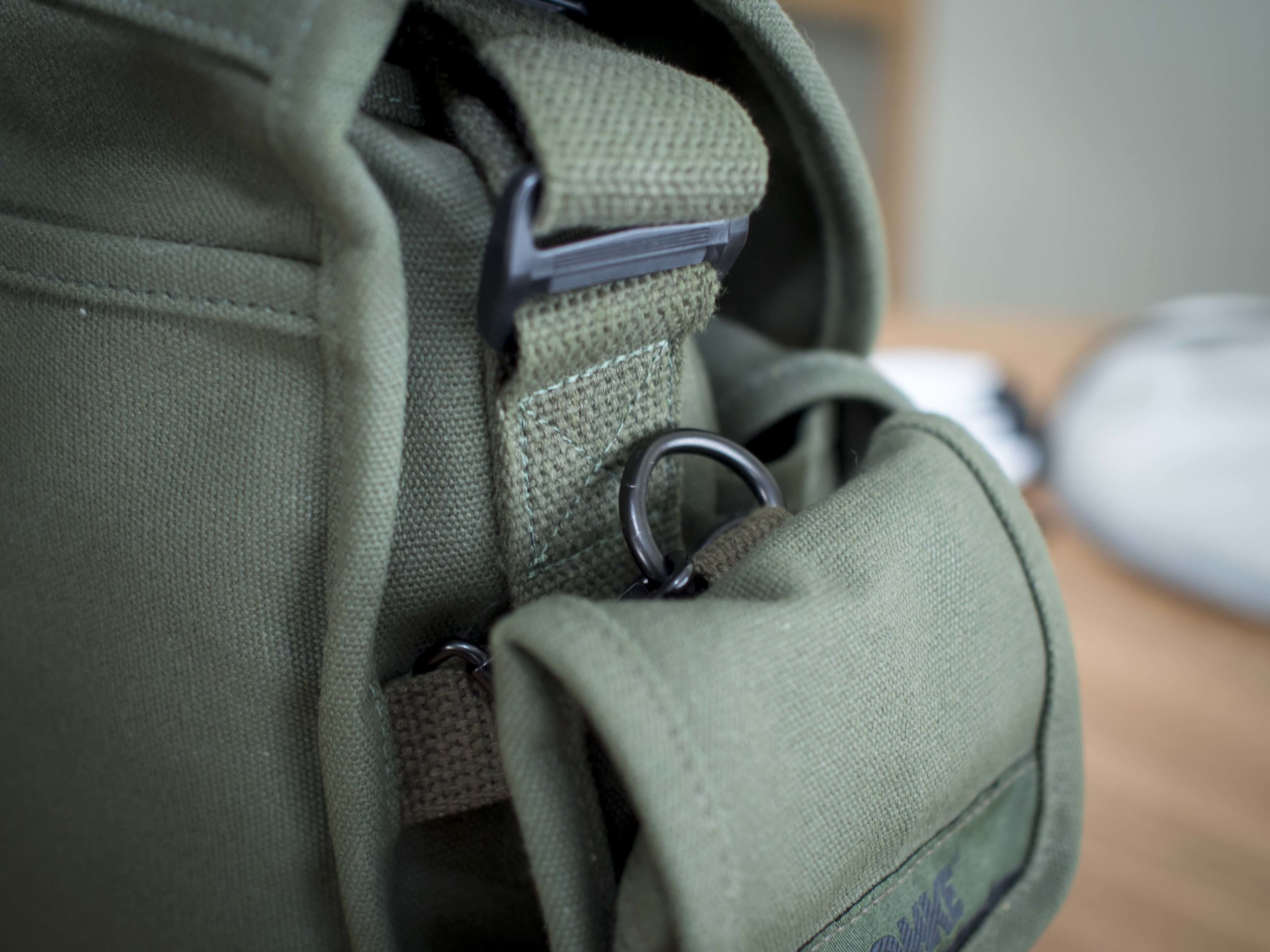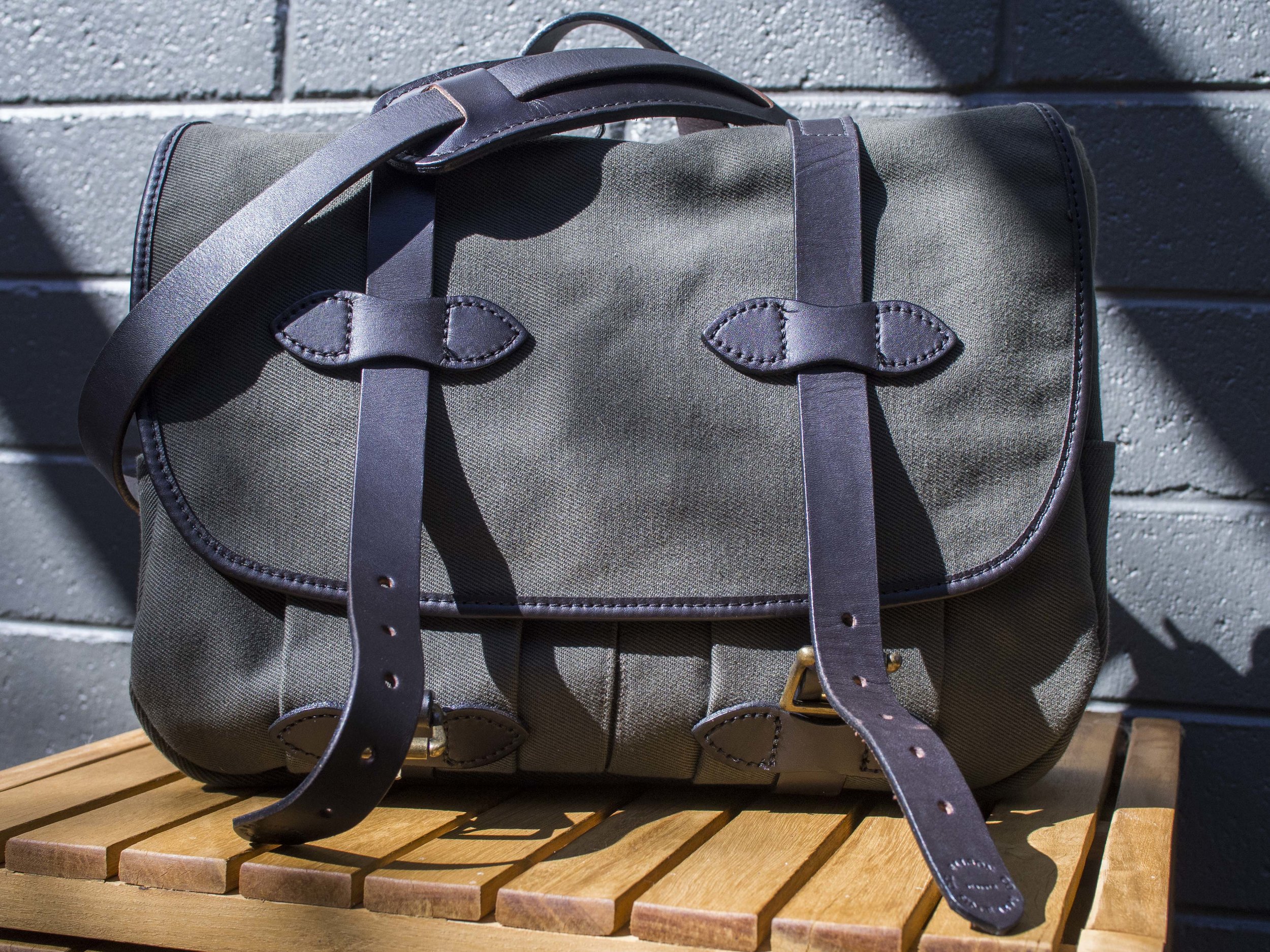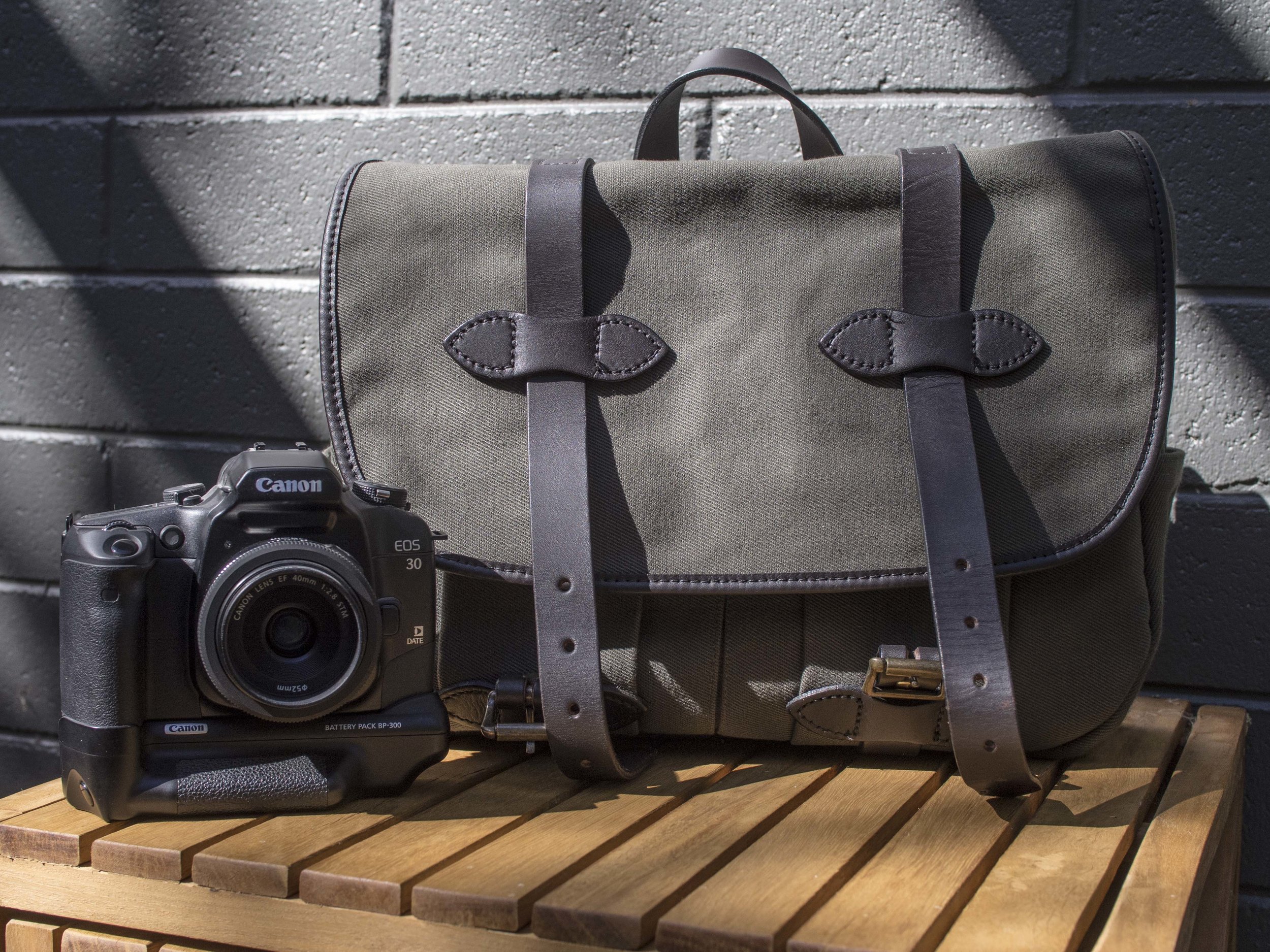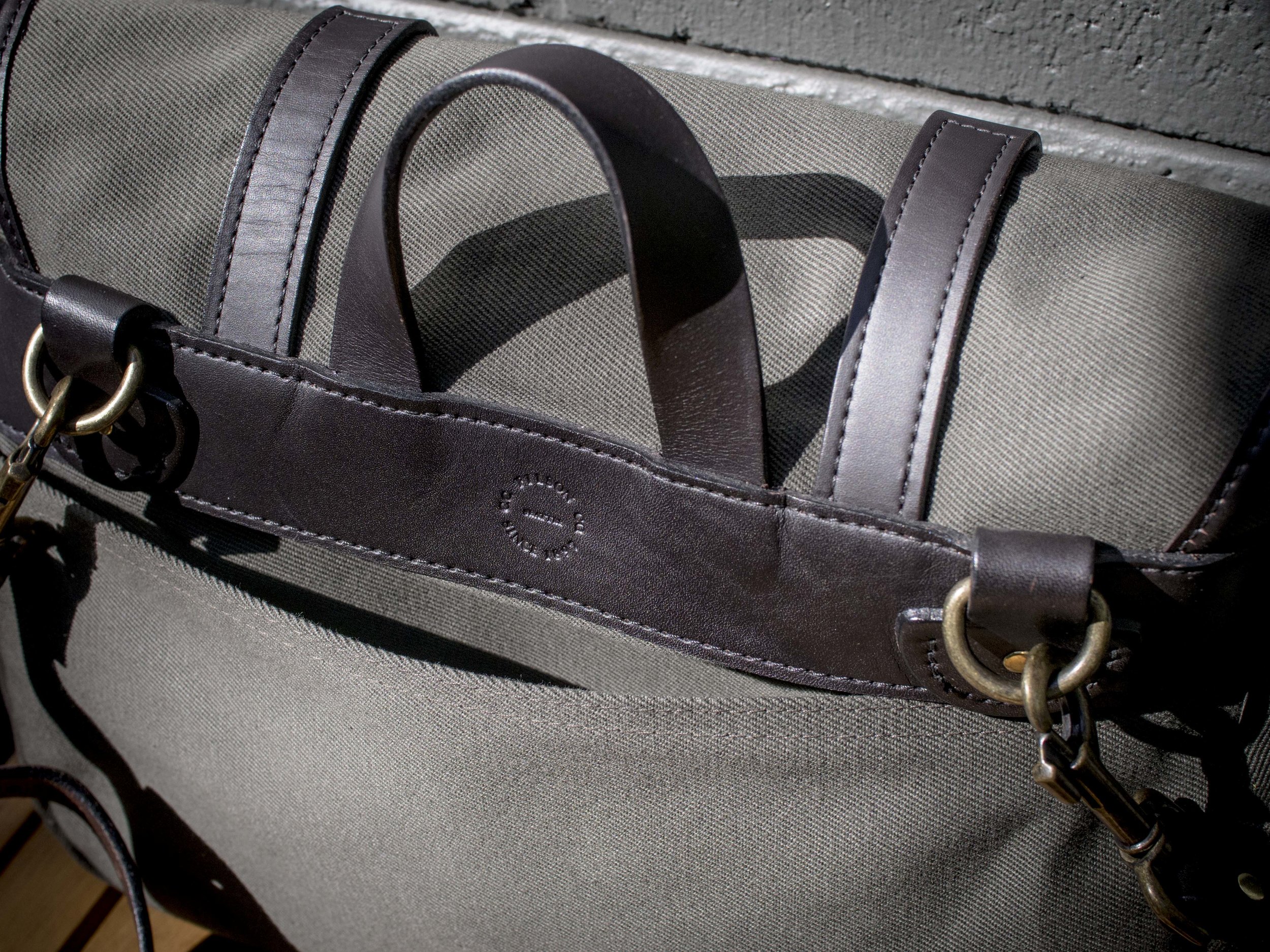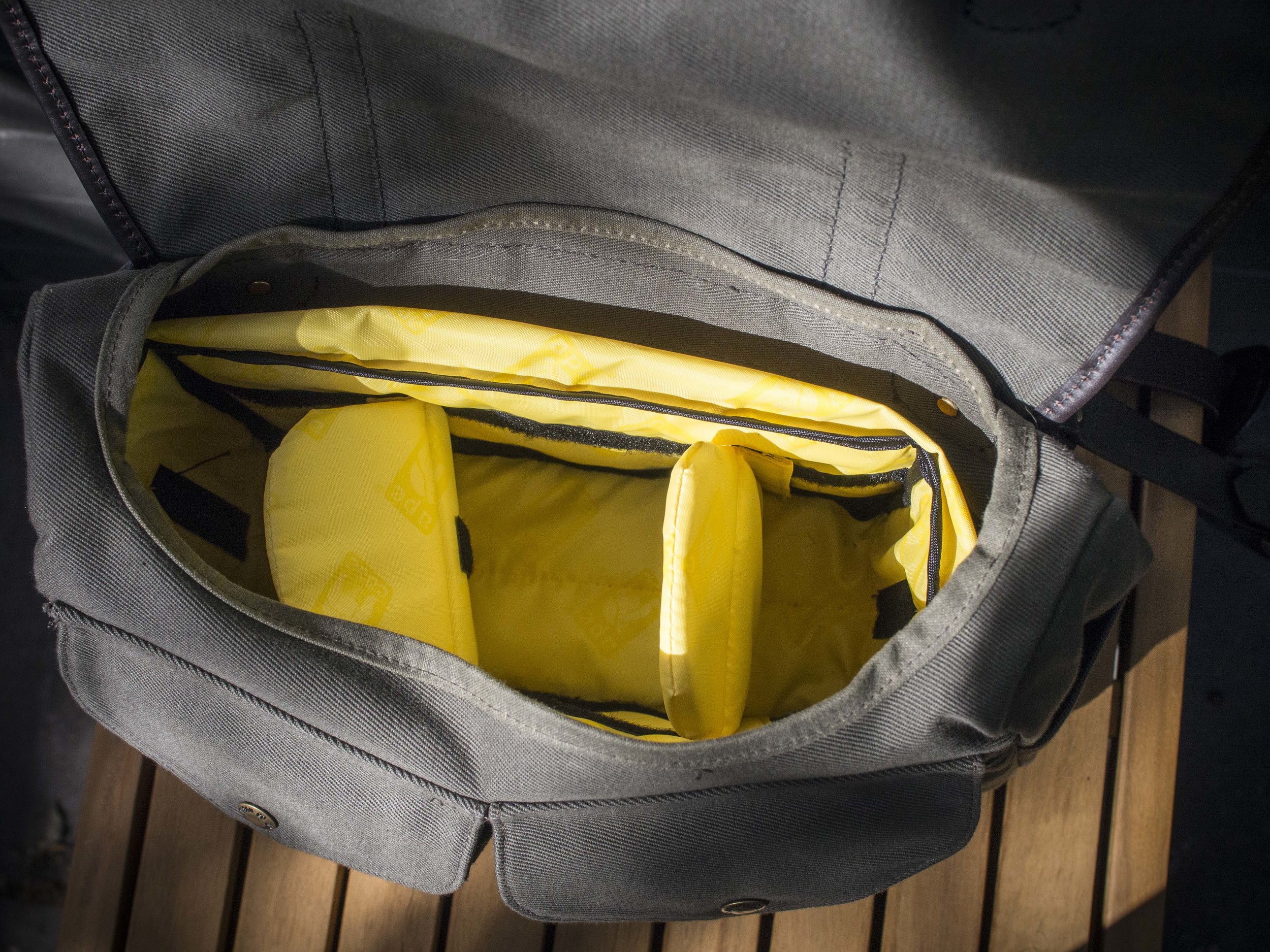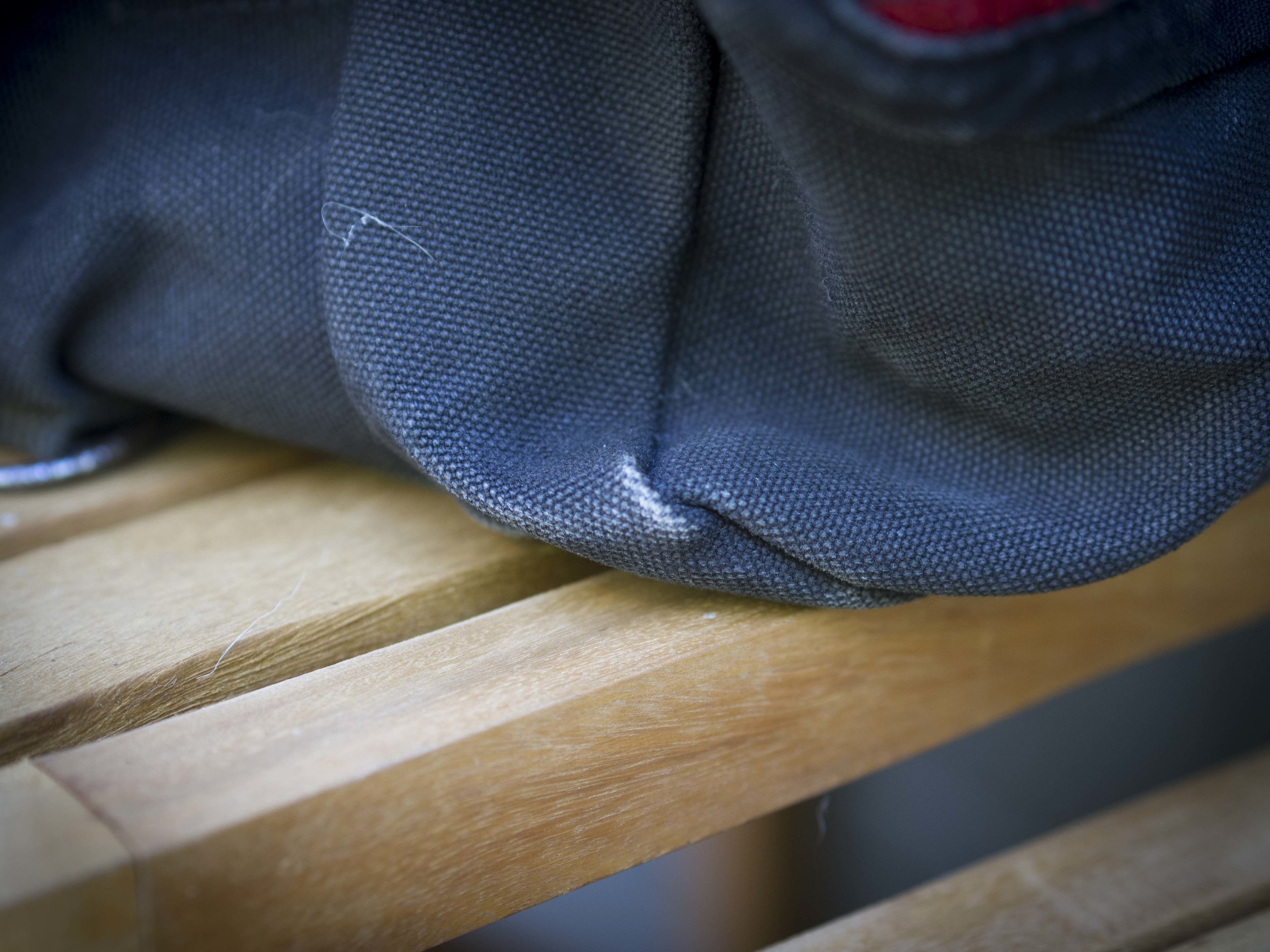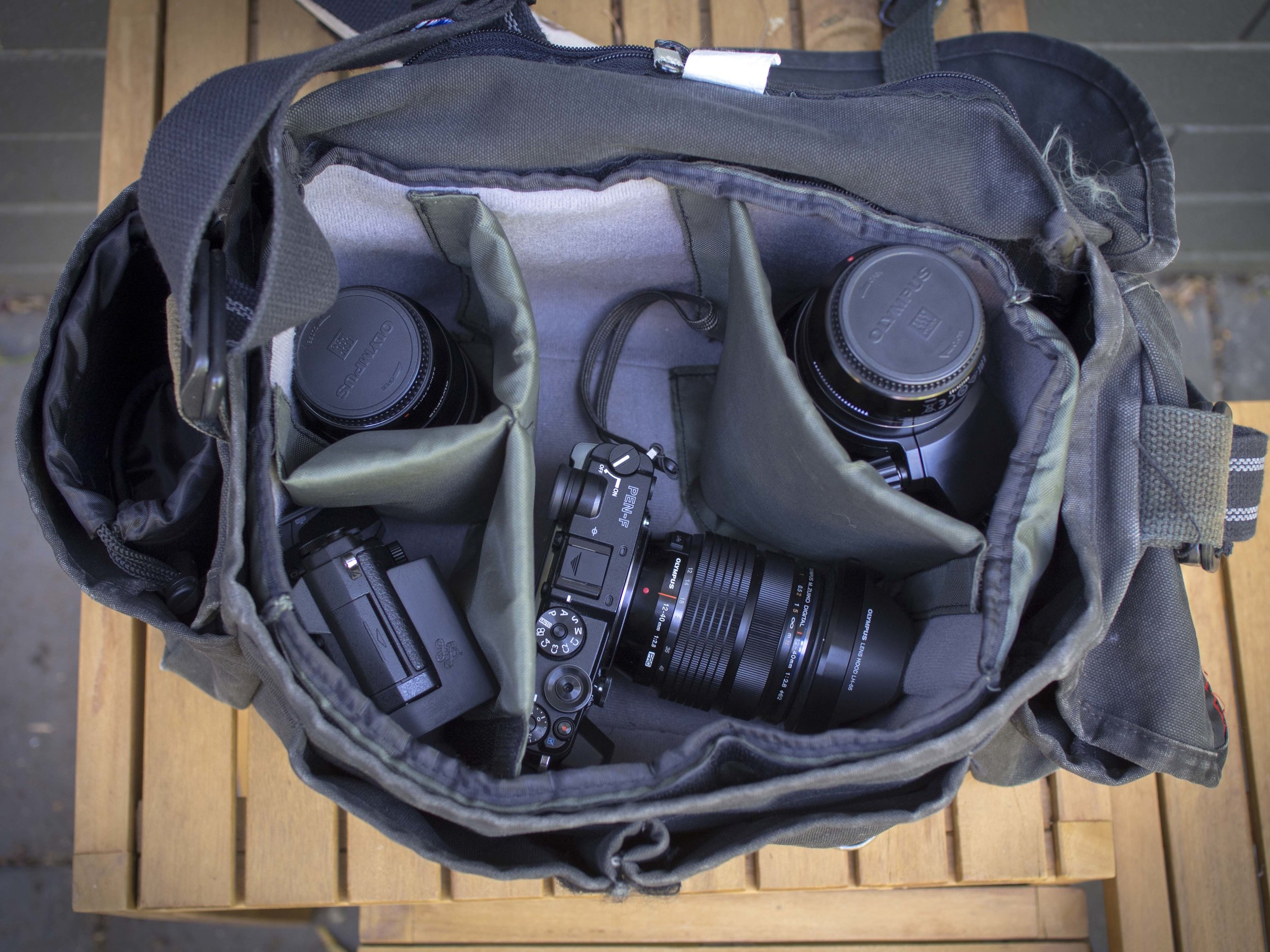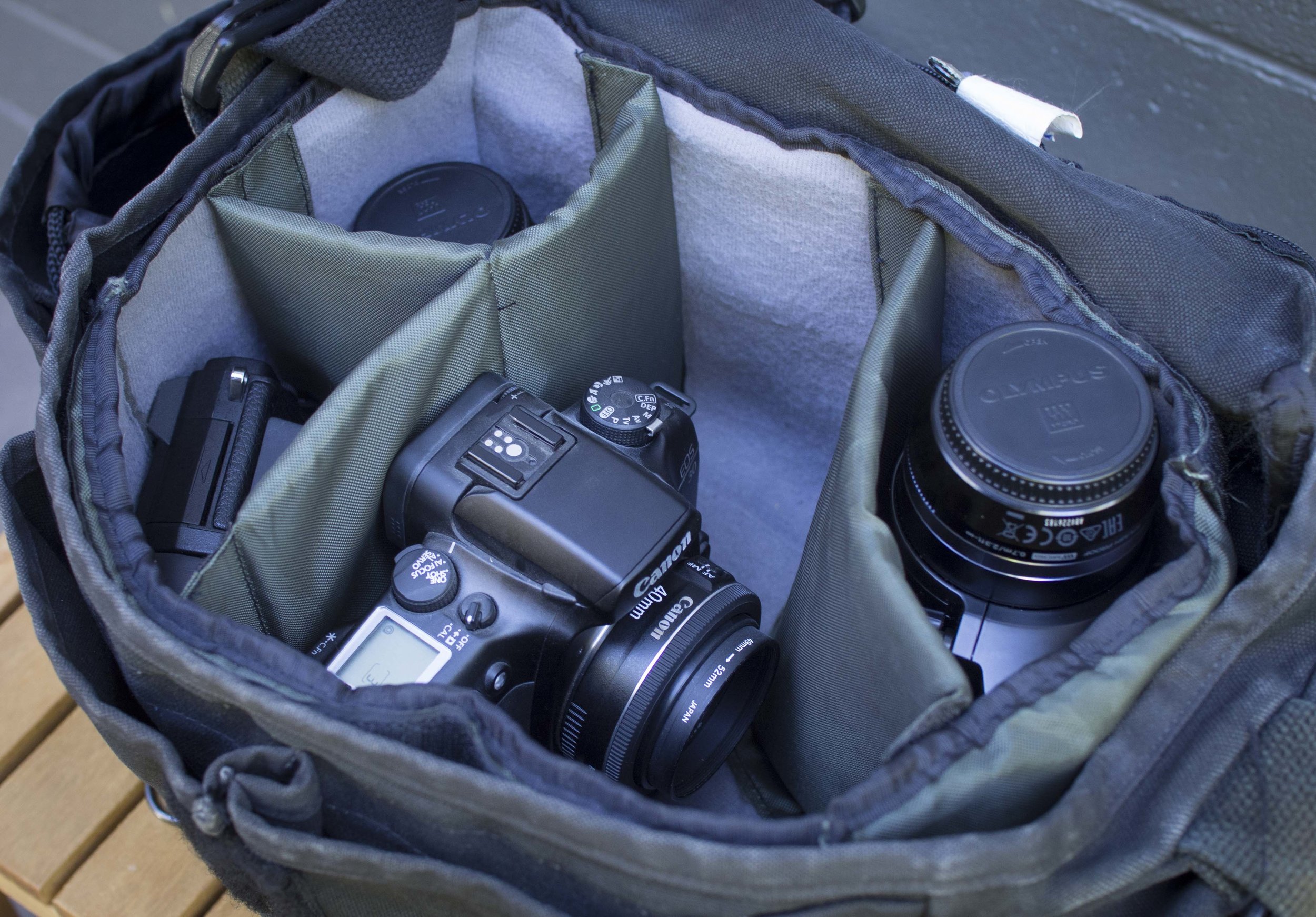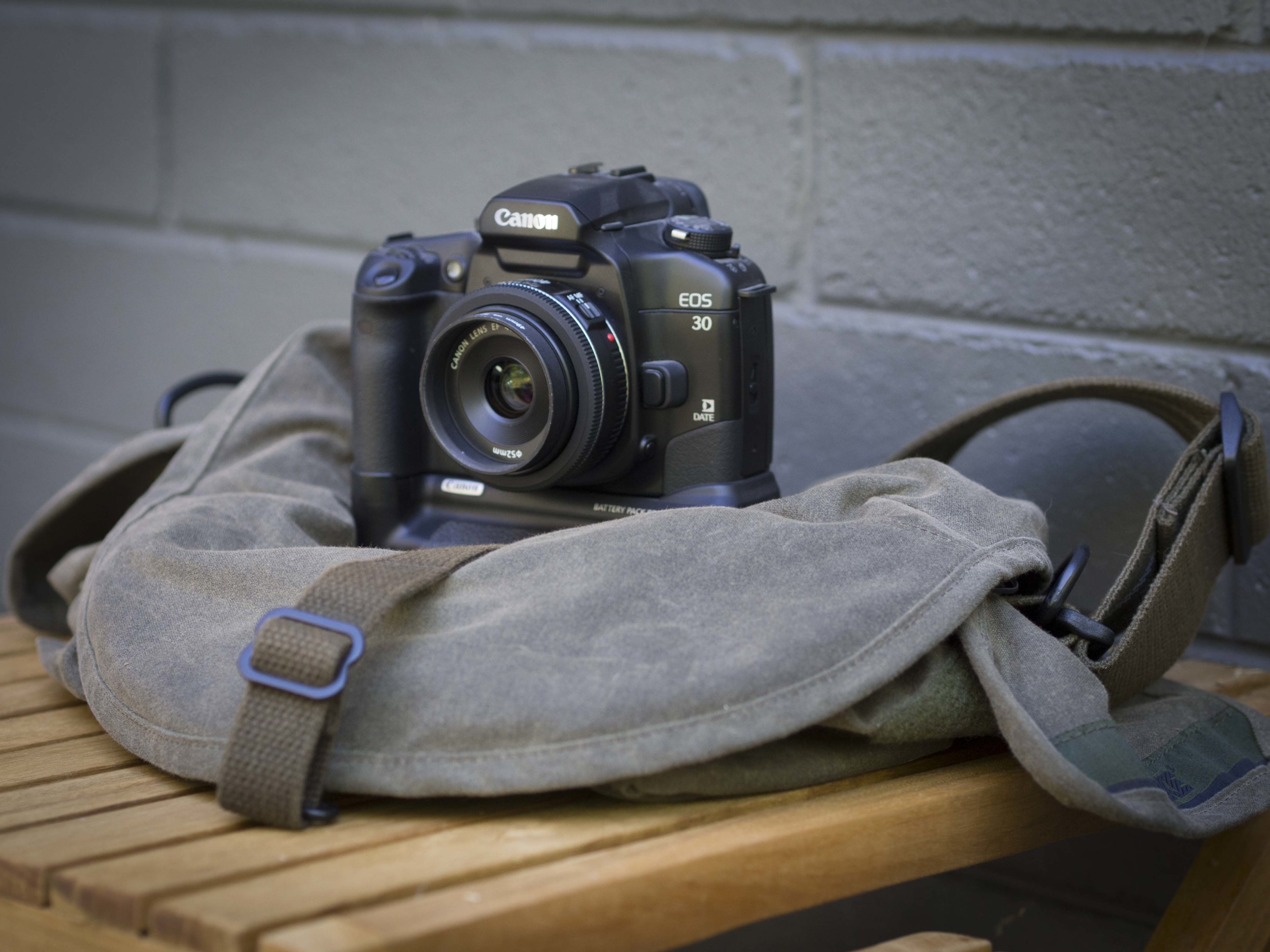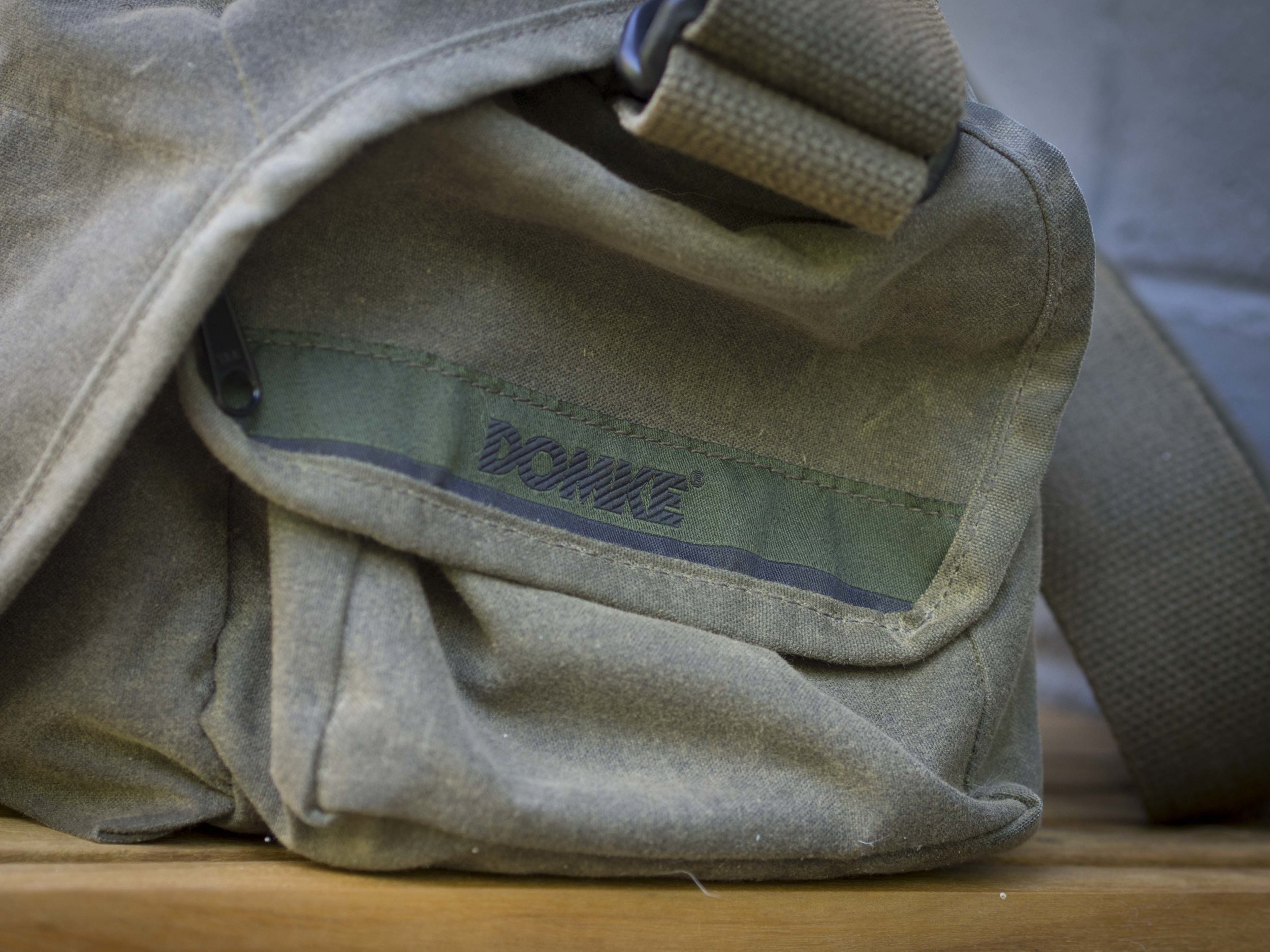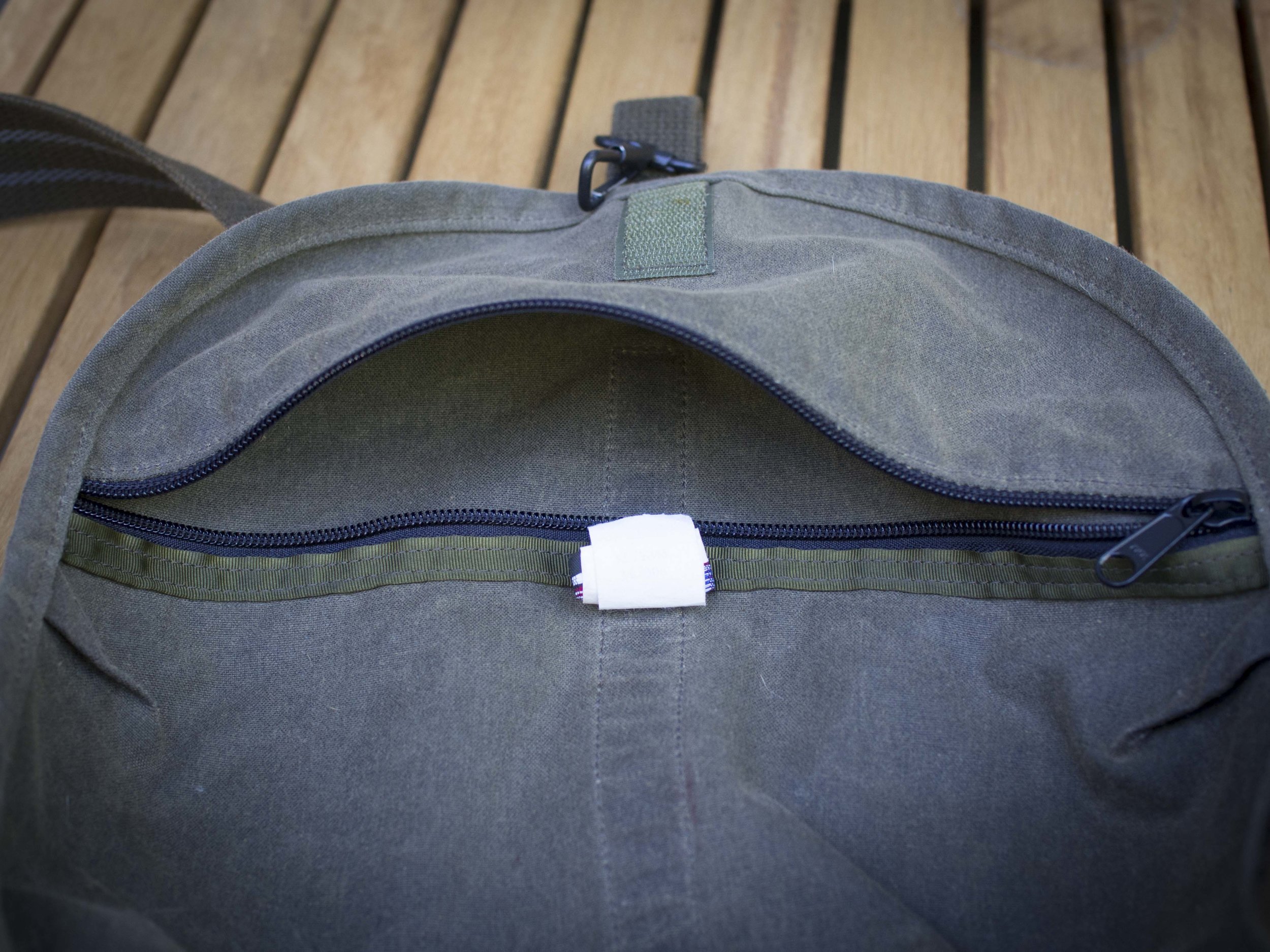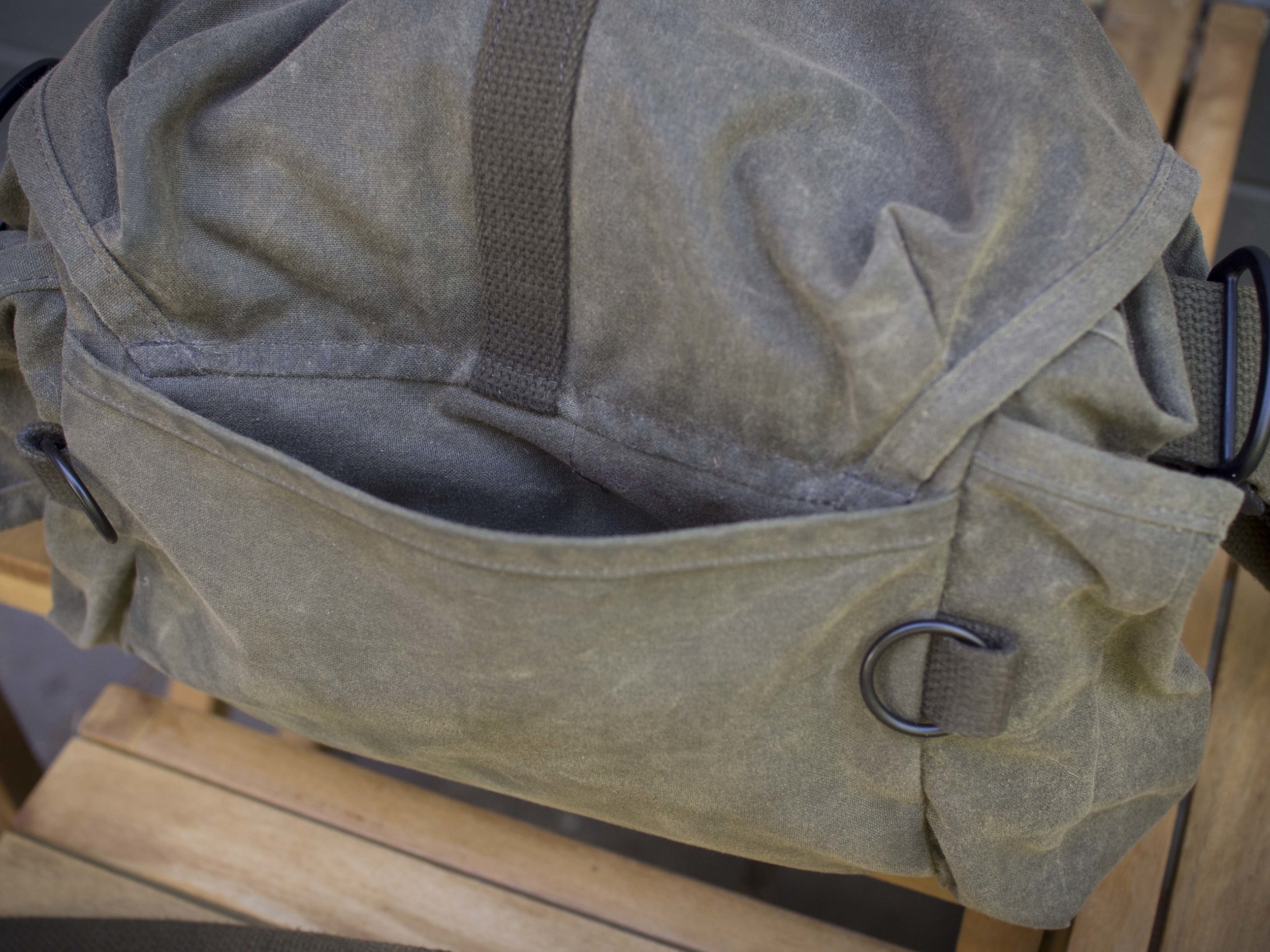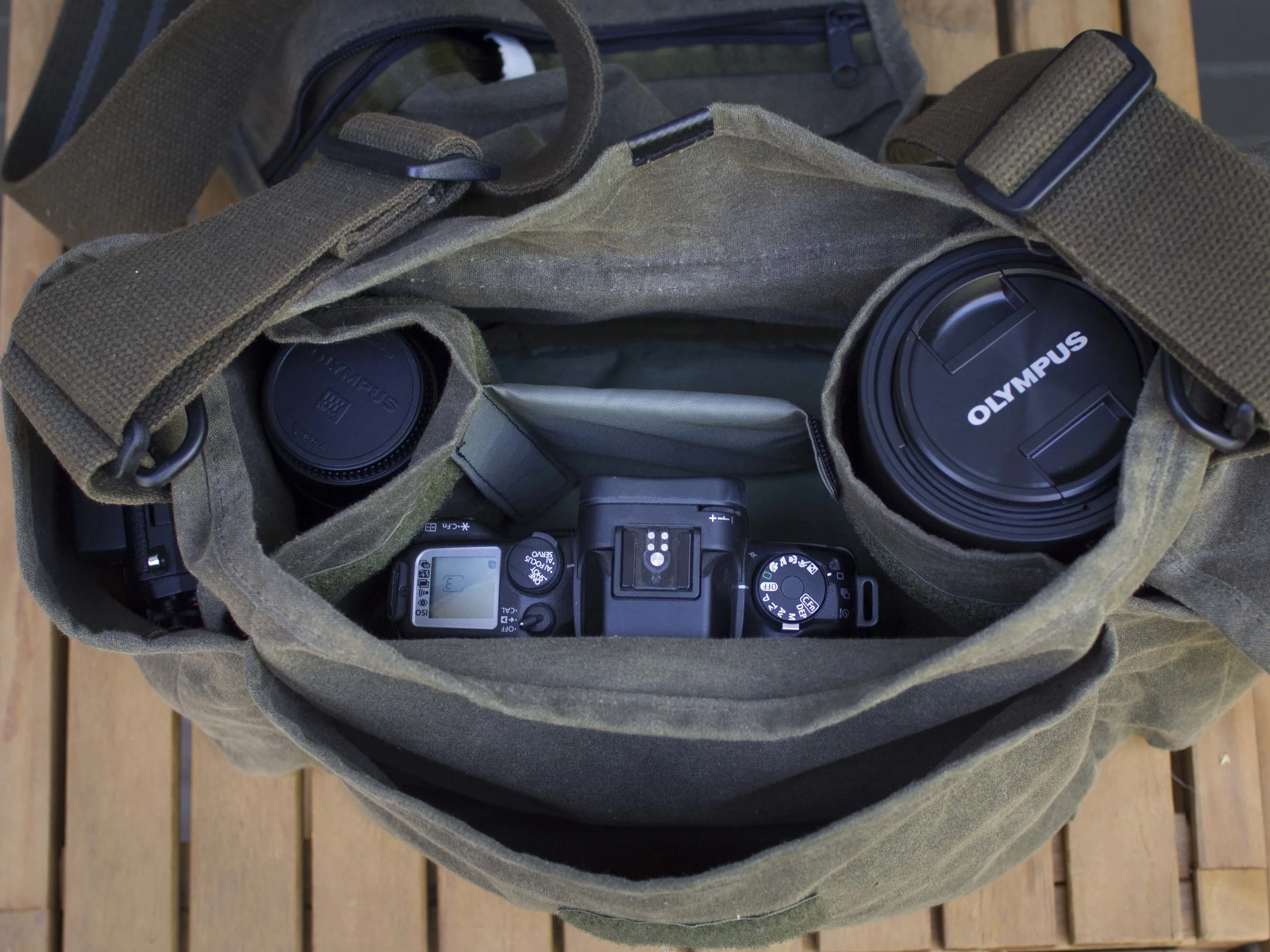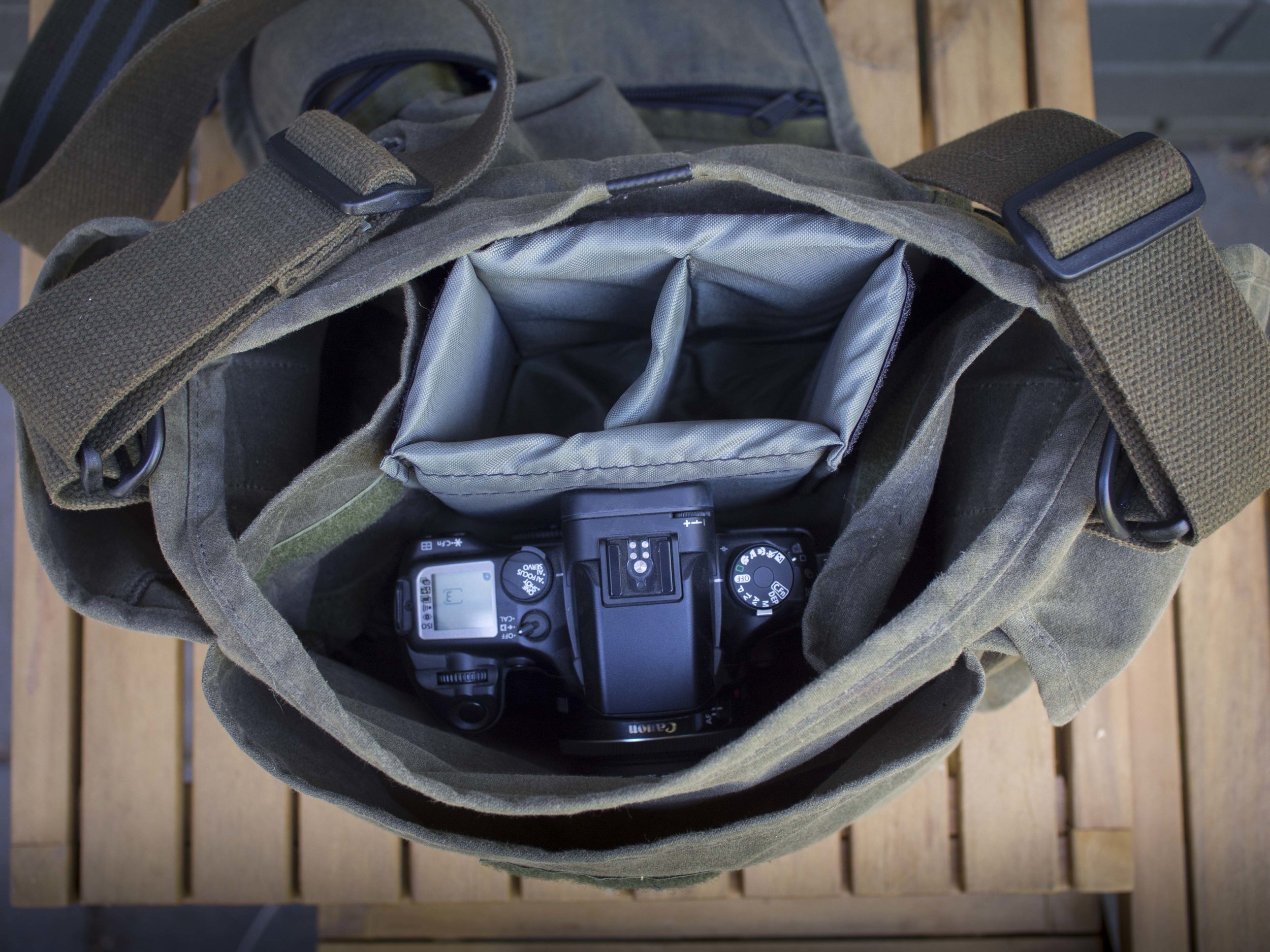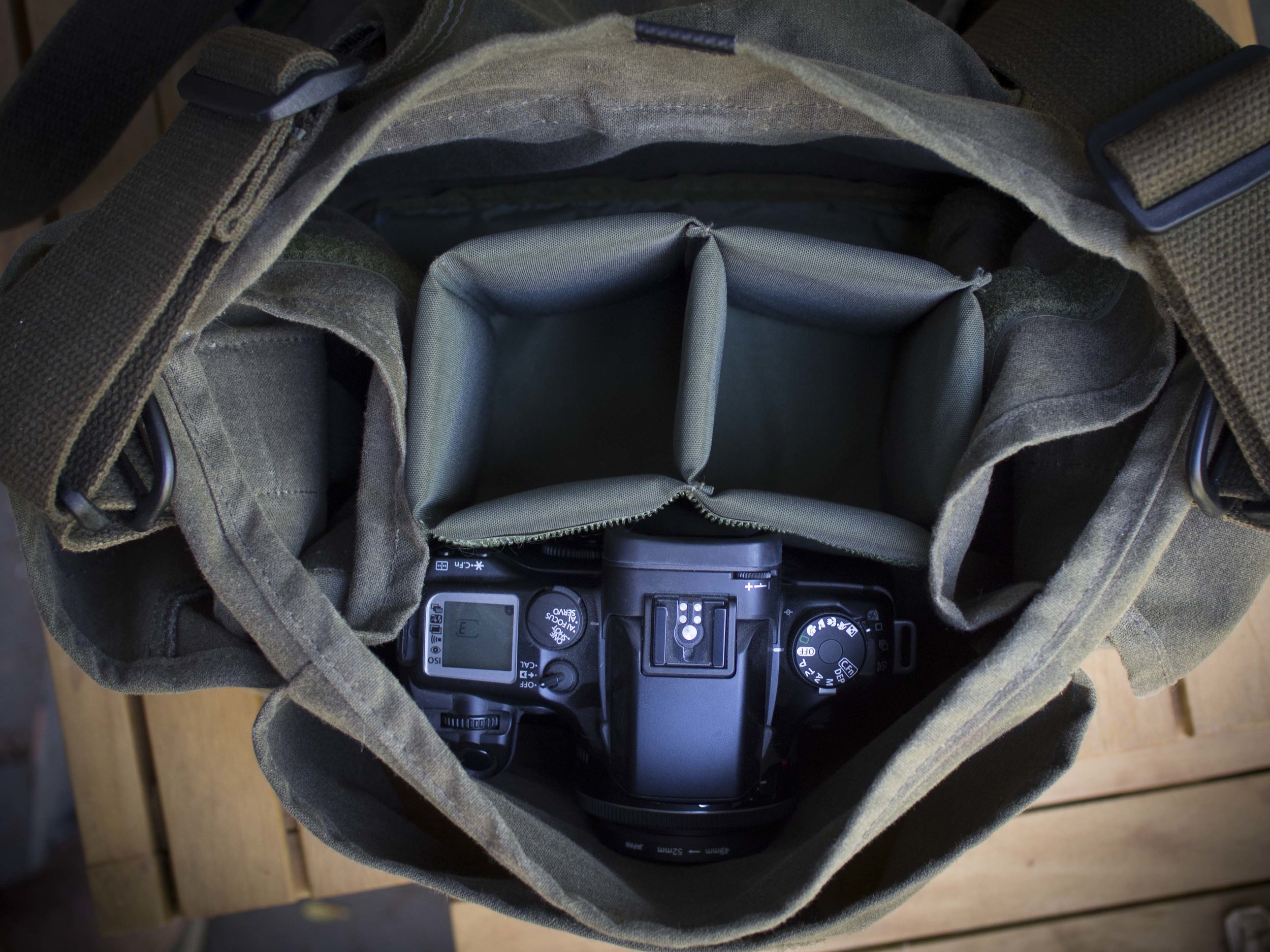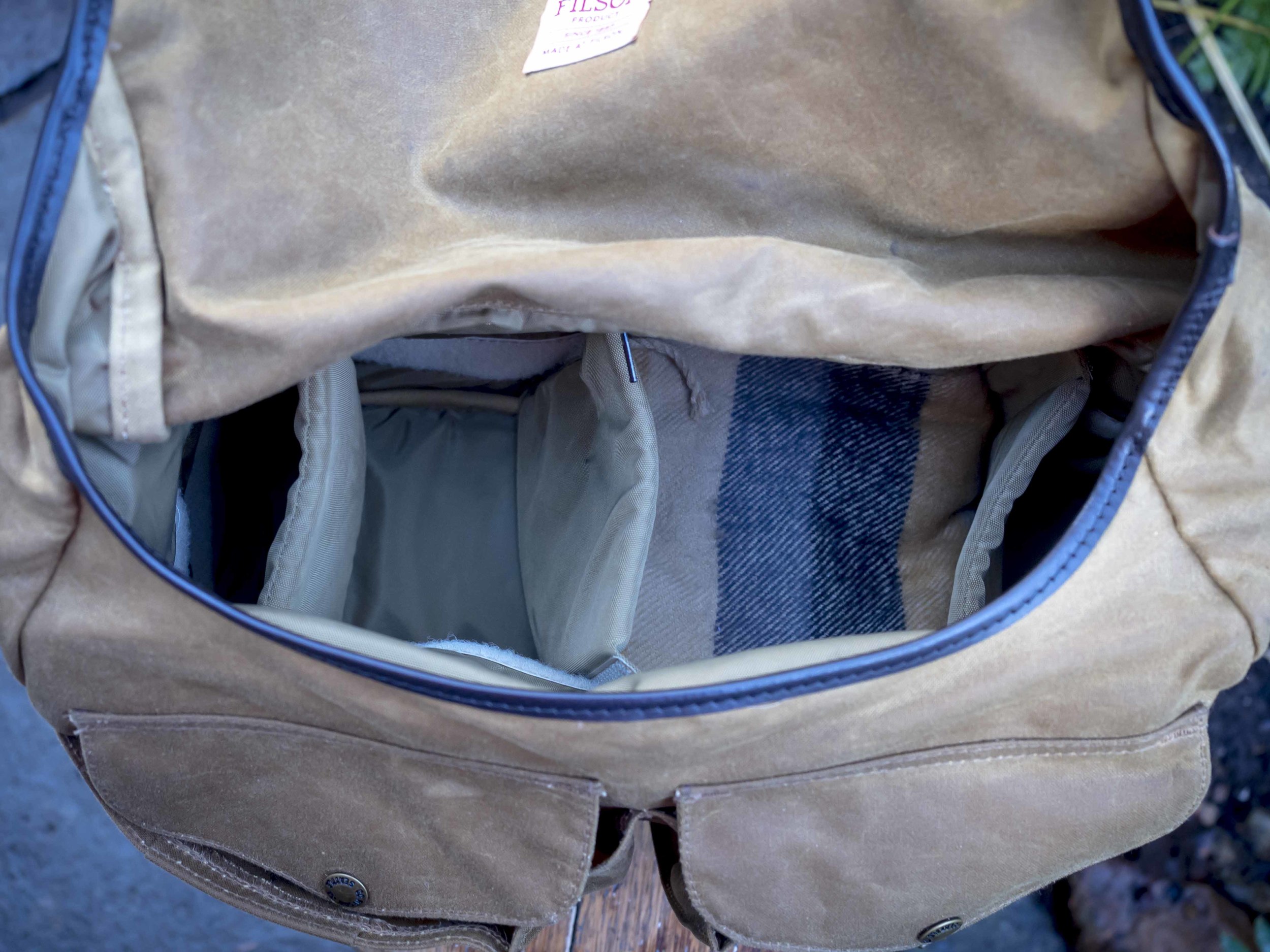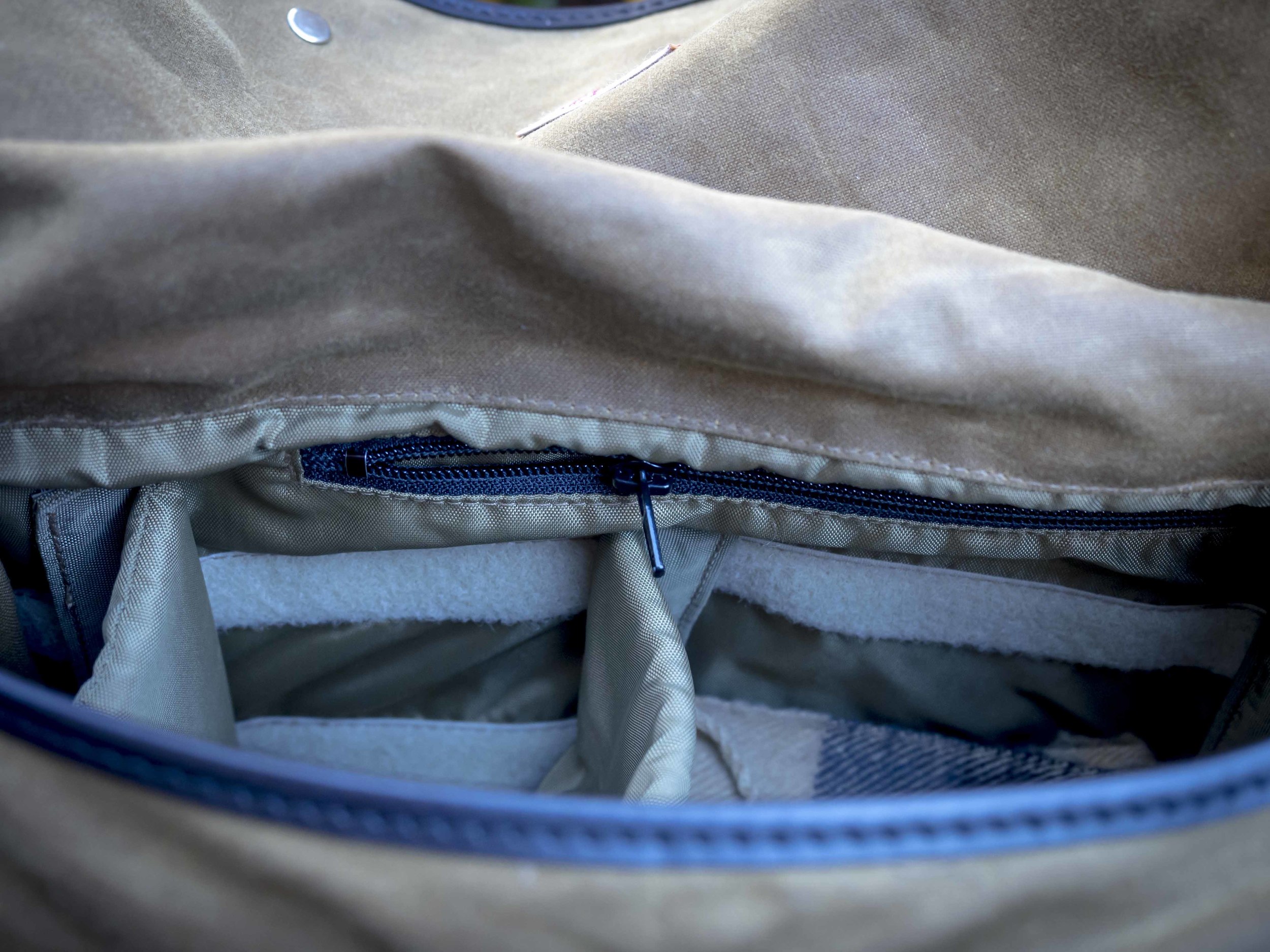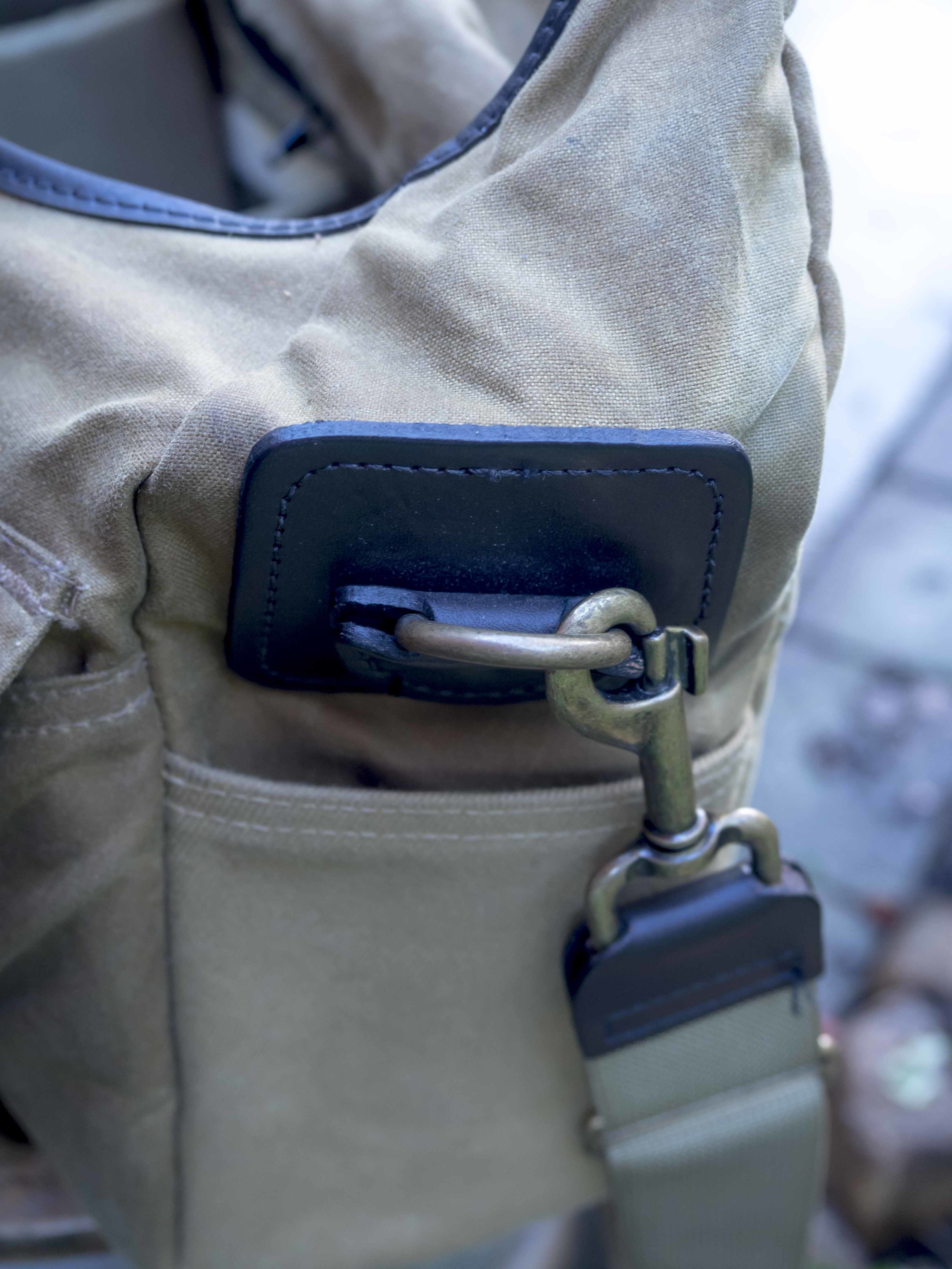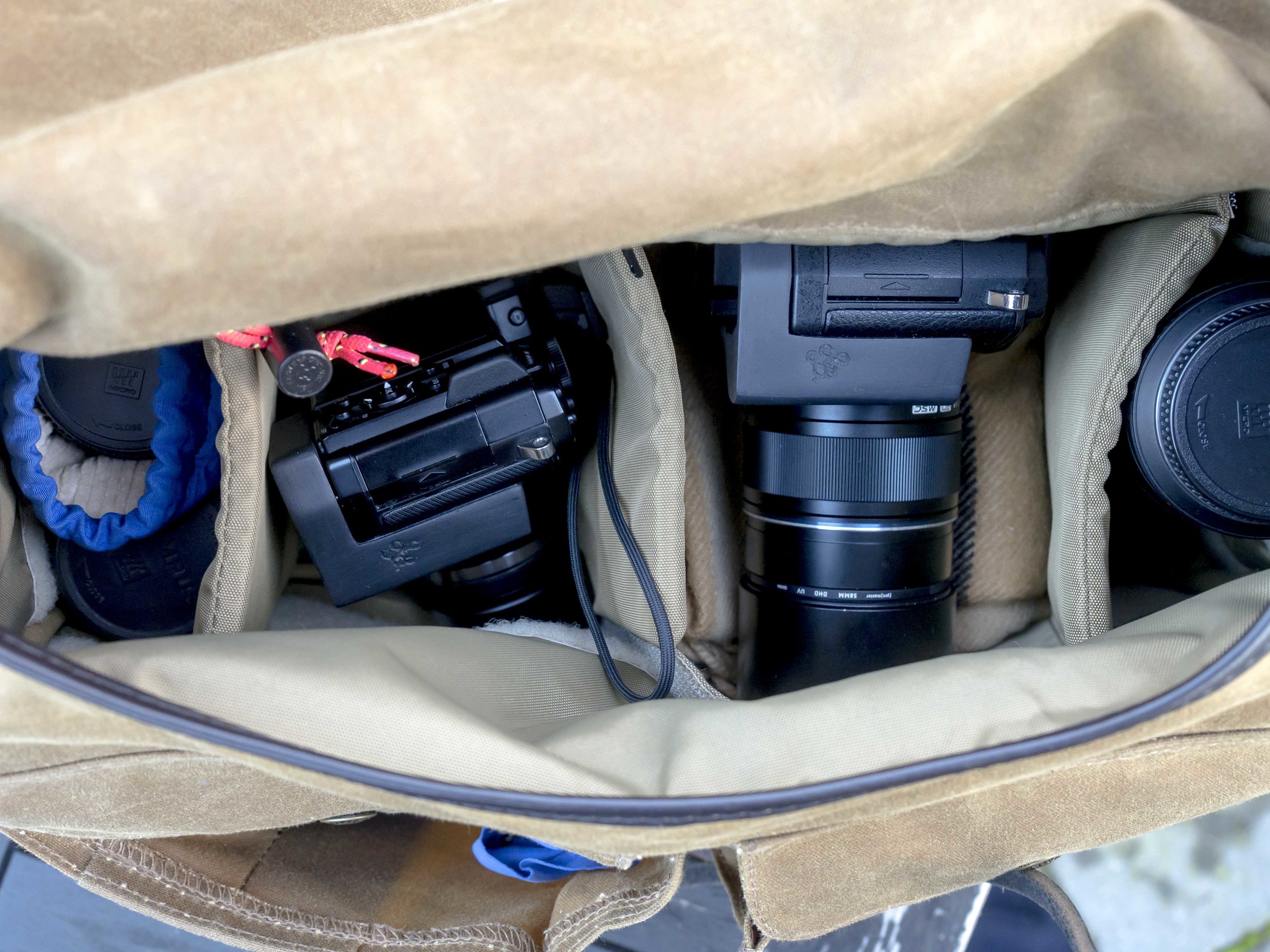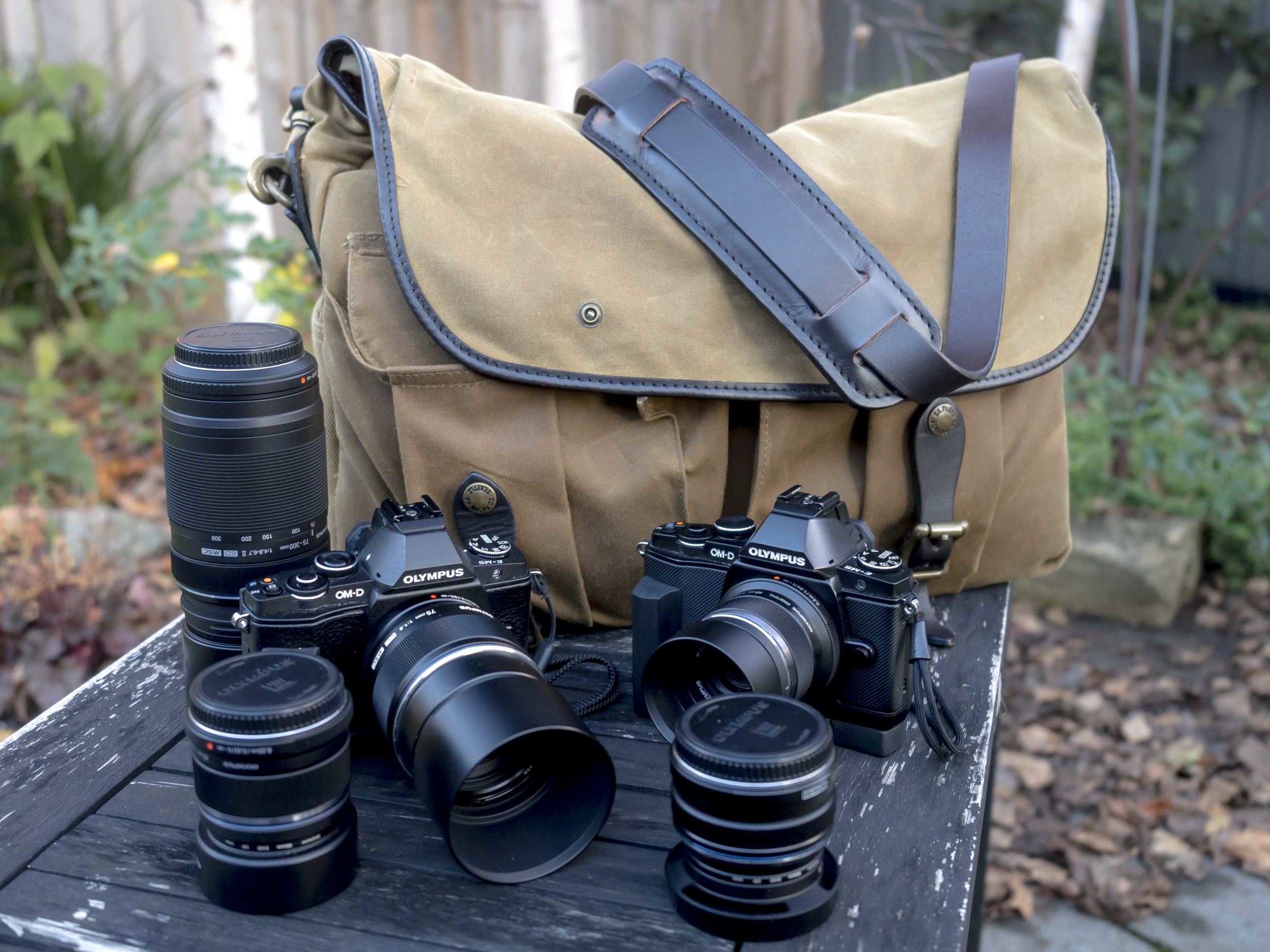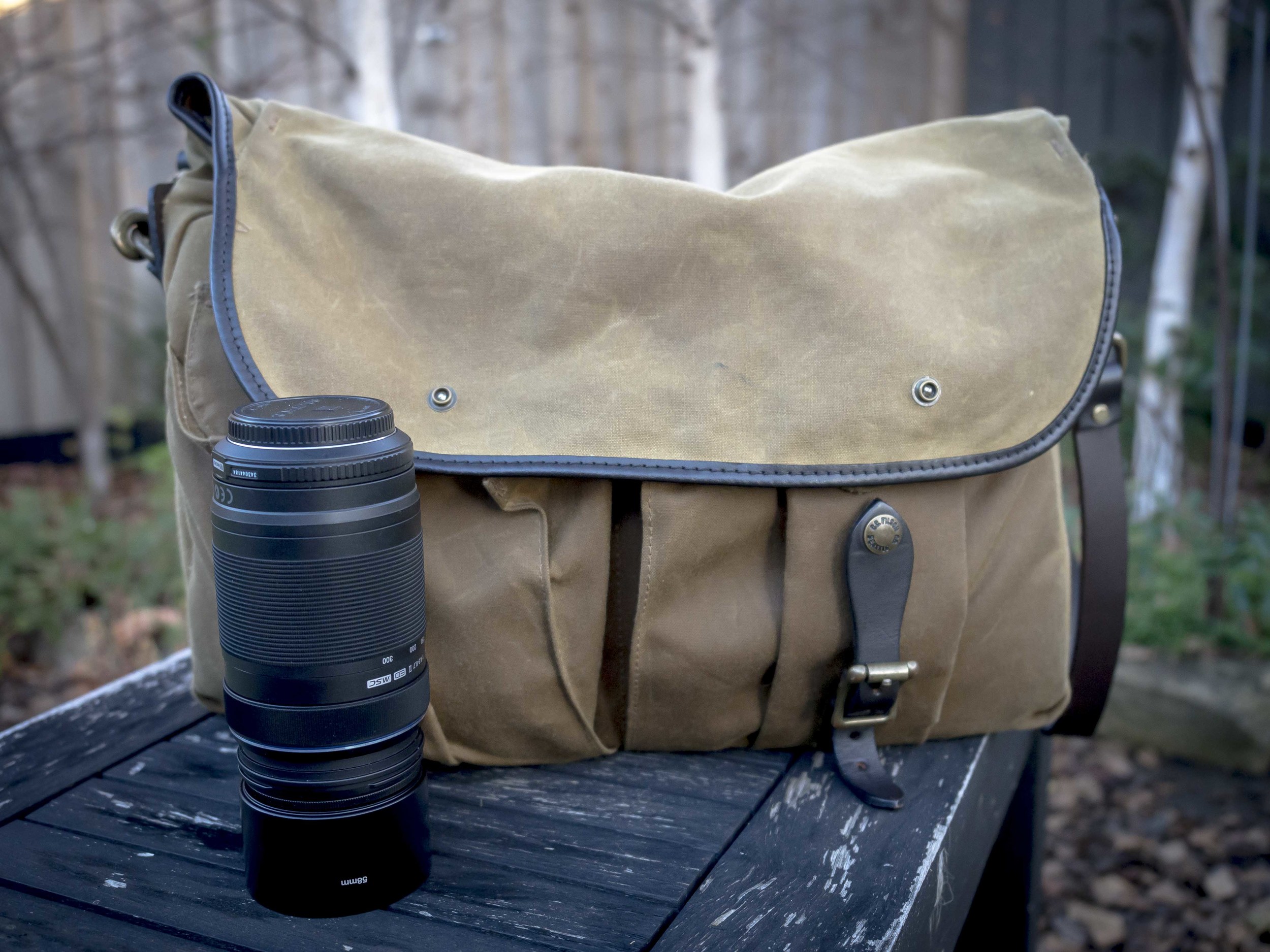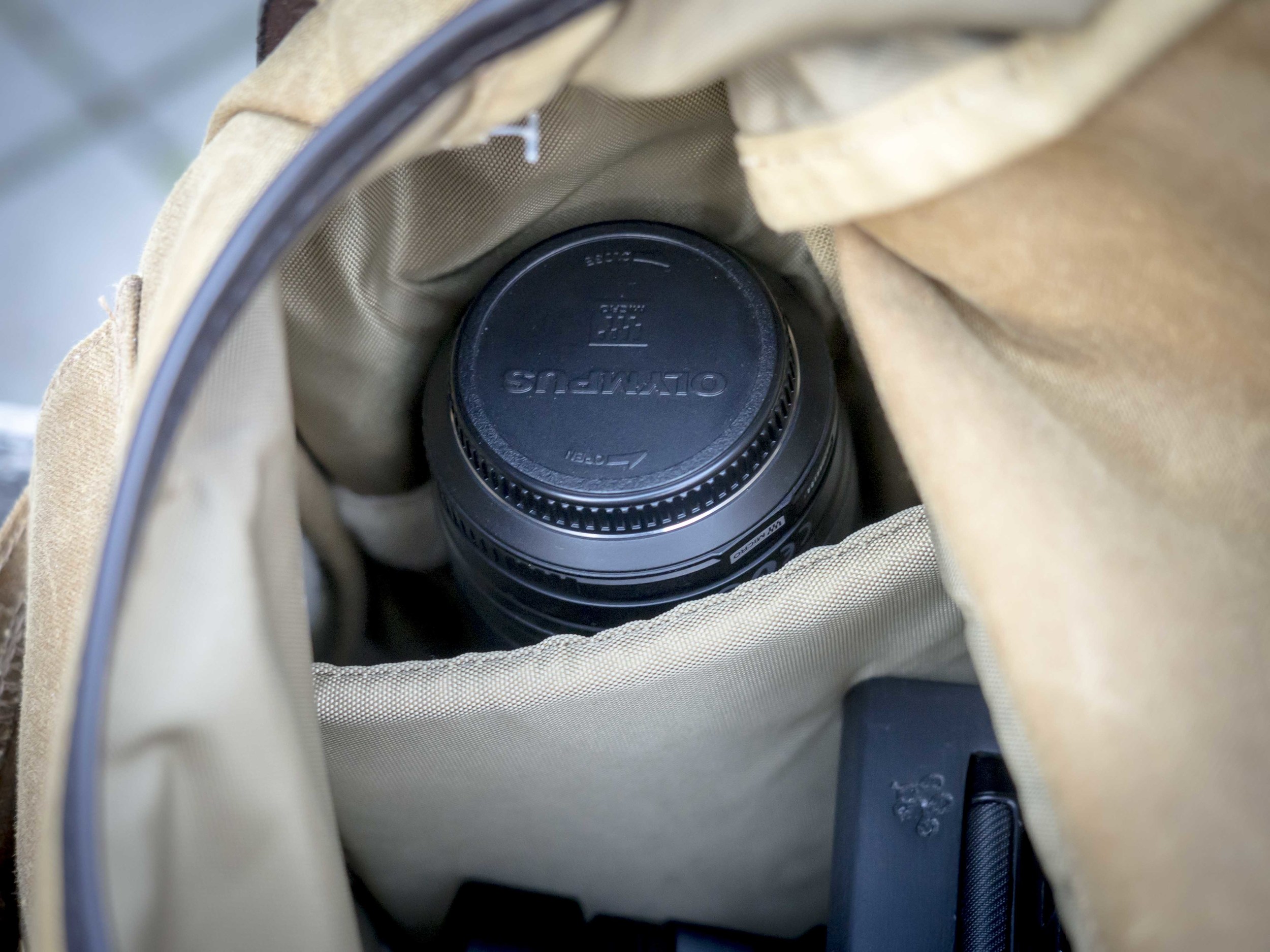Two years with the F804 and I have had time already to conjugate some thoughts.
1) It is big.
It may be still far from broken in and with the stiff base, it is a boxier bag and heavier than the slimline F802. It does however fit nicely across the body.
The thick seams rub a bit, but again, not worn in and I am pretty sure I thought the same about the F802 early days (when in use I fold the top flap backwards around the bag and secure it to the front-bottom clip loop, which fixes the rubbing and gives me easy access).
Maybe I should wash it or something to get the “nice” out of it, or just use the thing until it wears normally. I think maybe the green is softer by nature as all my green Domke bags seem to have worn-in faster. The F802 took about a year before it started to look broken in and that was with a lot of rotation, so maybe only a few months will be needed to settle things.
2) It cannot be worn across the body without it collapsing in.
This is not really an issue as I do not usually work this way, but it does collapse in making the huge (still stiff) flap an impediment when worn cross body (see above). To be fair, I was not fully sorted with the bag and had 4 layers of clothing on for a day at the cross country so my Michelin man impersonation did not help. Cold, friggin’ cold.
The top flap is so long, it comes up under the base and clips in the front if needed. The F-802 feels right, the 804’s feels too long.
I have a new insert, a cheap three compartment one that does a better job of separating camera+lens combinations, how I use them with 3 cameras and mounted lenses. This is deeper than the Tenba ones.
3) It may fit more, but be careful what you shove in it.
Empty space does not weigh, but it sure can add up if you choose to fill every hole and the base bag with heavy base panel is heavier than the 802 even empty.
My original base kit with this bag now for the new school (EM1x + 40-150 f2.8, G9 + 8-18, 25 & 45 f1.8’s), was not huge and it is after all M43, big M43, but M43. Add a flash, mics, note books, laptop, bits and pieces and suddenly it is a dead weight.
4) It is bigger, but it needs to be.
The problematic EM1x sits very nicely in the F804, unlike the relatively cramped F802. Could have used a smaller body, but I do not have a spare EM1 mk2. There is a different insert coming also, so this may change things.
5) The flap is too big. I usually flipped the 802’s flap over to the back for easy access. The 840 flap nearly reaches the ground, well not really, but it seems like. The 802 flap has a rigid spine across the top, which the 804 lacks and combined with the extra size, just makes it feel like an acre of unwanted materiel.
6) Finally I don’t use it.
The size and general handling make it a last thought bag. The F802 does satchels better, the new F7 is the better volume bag, the F2 fits my smaller M43 gear better. It is currently relegated to a haul bag for video stuff.
Other thoughts.
I would have loved to have a hidden pocket in under the flap, like the F7/F2.
I may get one big pouch, because even though I really do not want any more weight, they are so useful for rain jackets, mics, even an LED panel and it is so big, why not maximise its potential. One issue though is the sides of the bag are different to the 802’s, so I will have to think on how to do that.
*Actual kit (and things I would like to take, so may take in as reserves):
Small Neewer mic, with stand, short cable, fluffy and ear phones (Movo LAV and mini shotgun, spare cable).
Godox 685 flash (860 and TTL remote trigger).
Mini Olympus flash, ideal for fill.
Soft jacket, the type that roll up small and are just enough to blunt wind and rain in an emergency. This is in a small Lowe Pro pouch strapped to the bags side.
Note book and pen, phone.
Face masks, tube of sanitiser, spare batts and cards, ID, snacks.
Chargers and cables, that can stay behind.
Not much overall, but it adds up. The laptop and its cables will be left behind unless I am doing an overnight trip.
*This new kit has allowed me to use the F802 for the paper and the F804 for school.




















